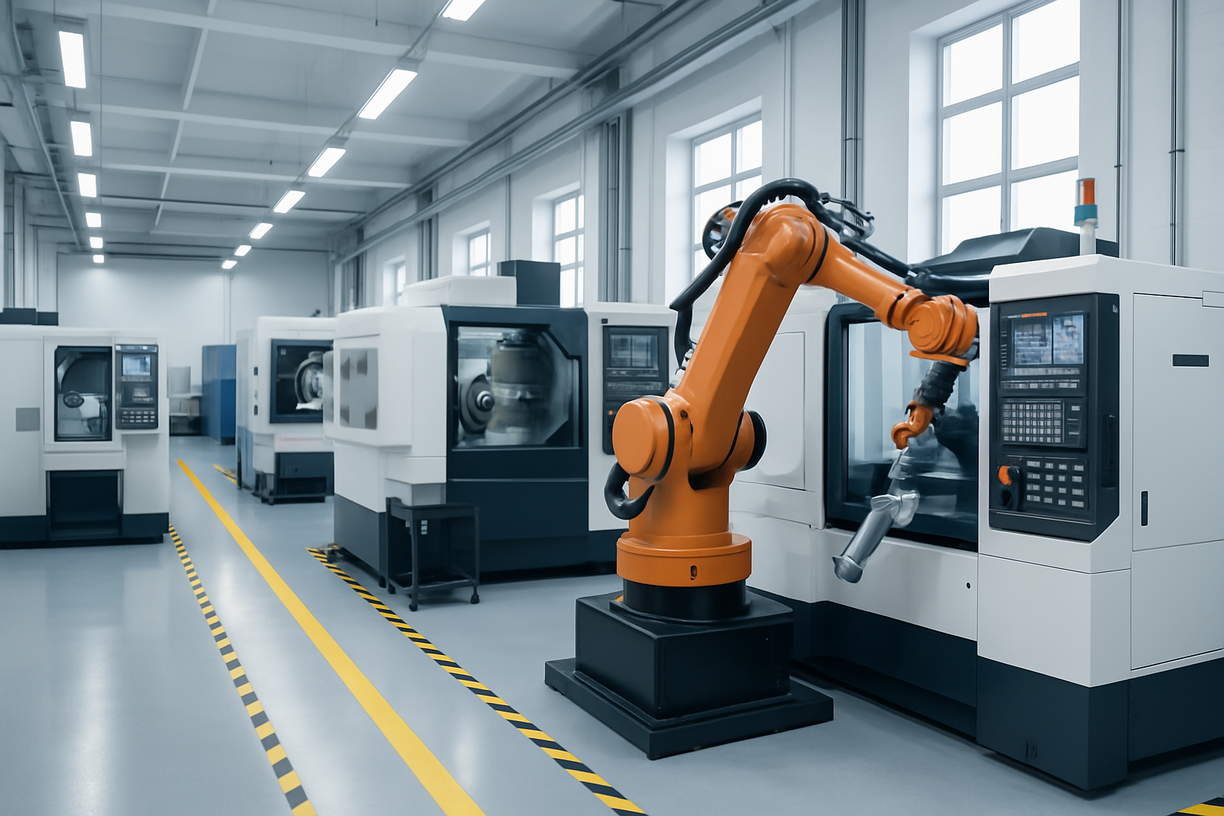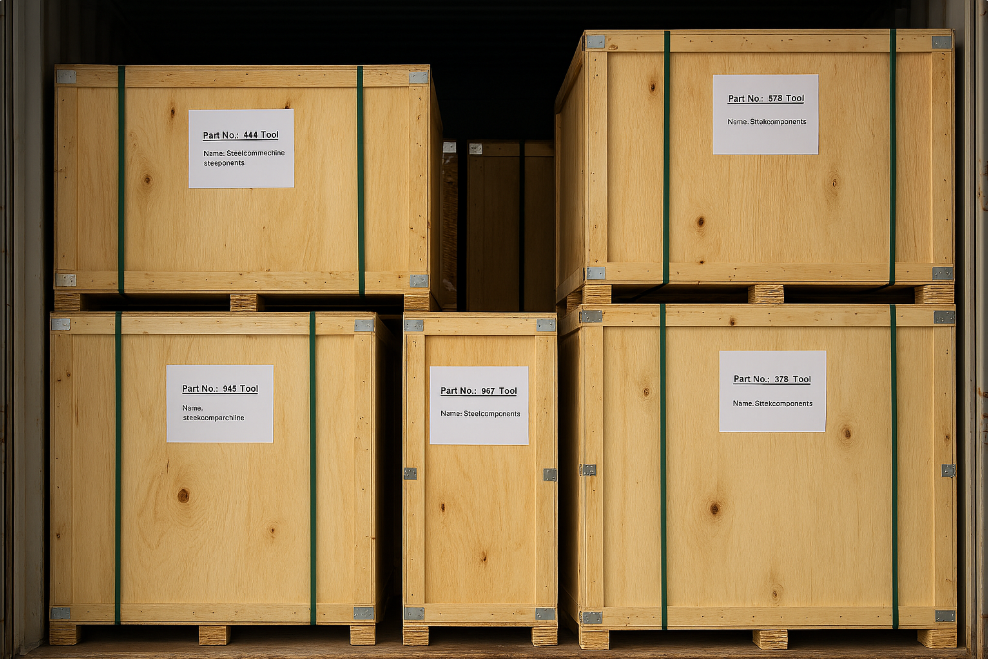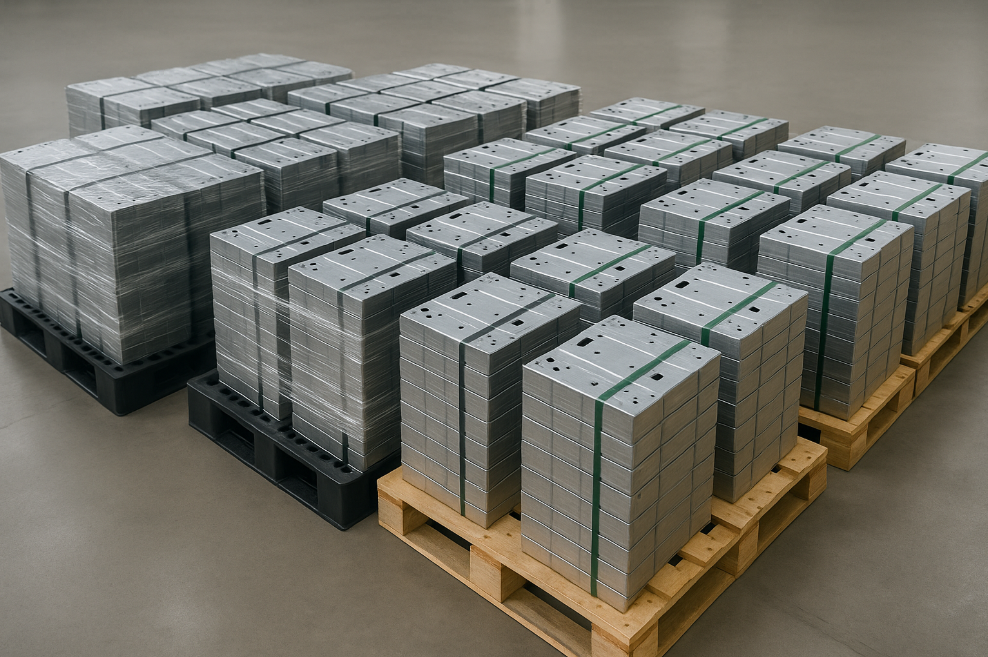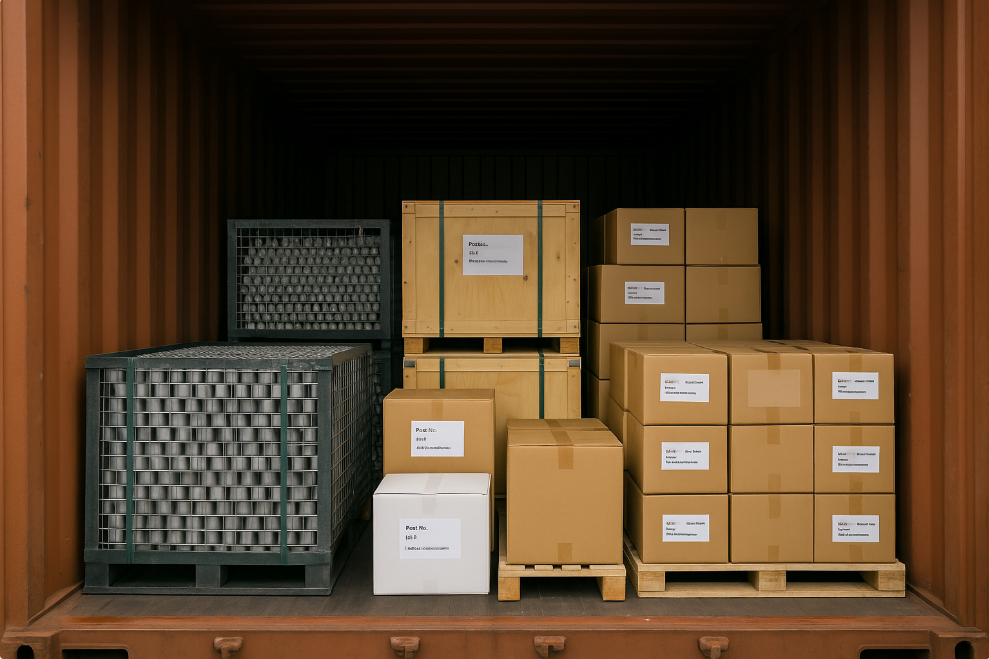Precision Metal Stamping Solutions for Global Industries
Prime---Your Trusted Factory Since 1993
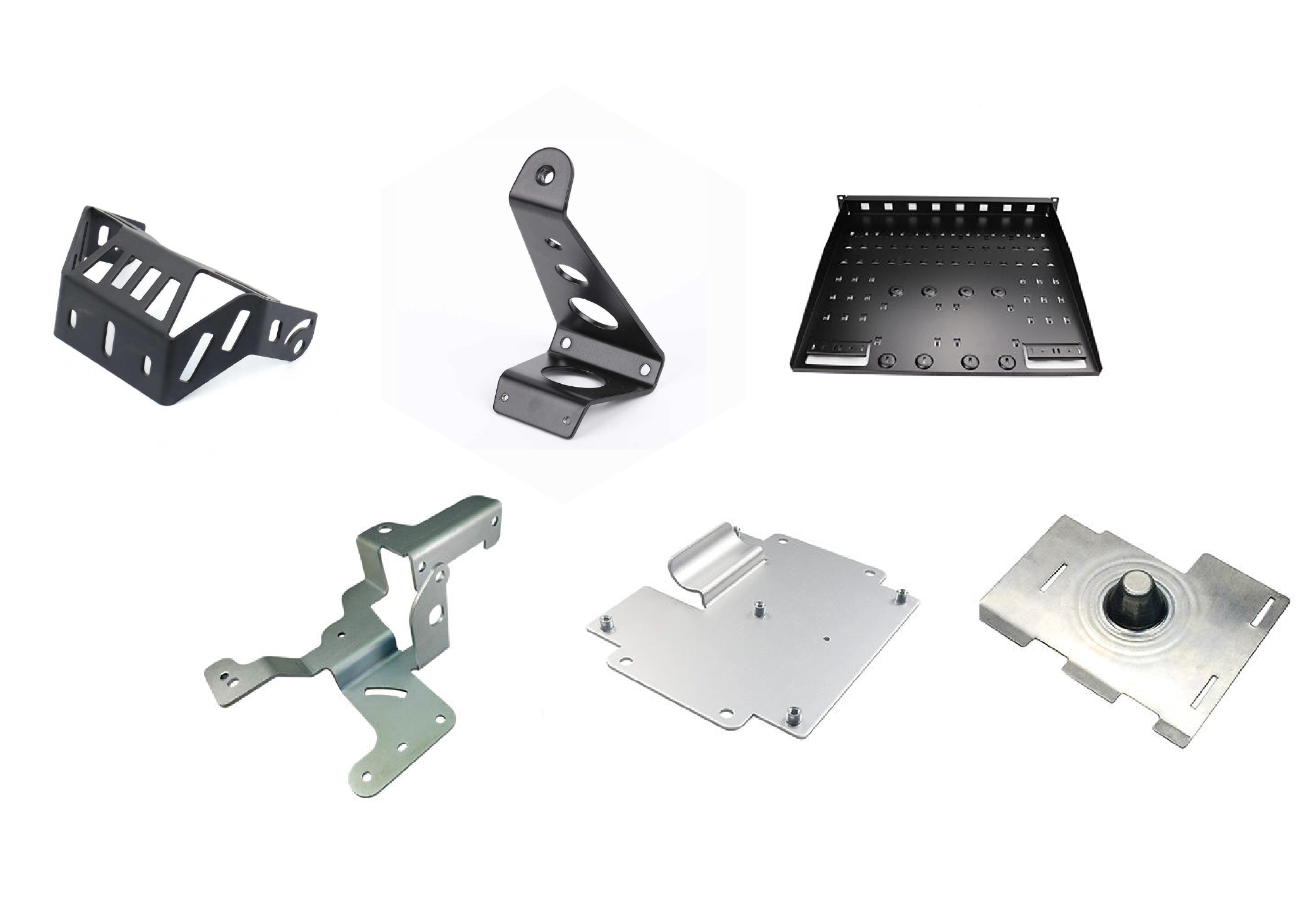
Common Products Of Metal Stamping
Prime offers a full range of high quality metal parts for a wide range of industrial, mechanical and manufacturing scenarios.
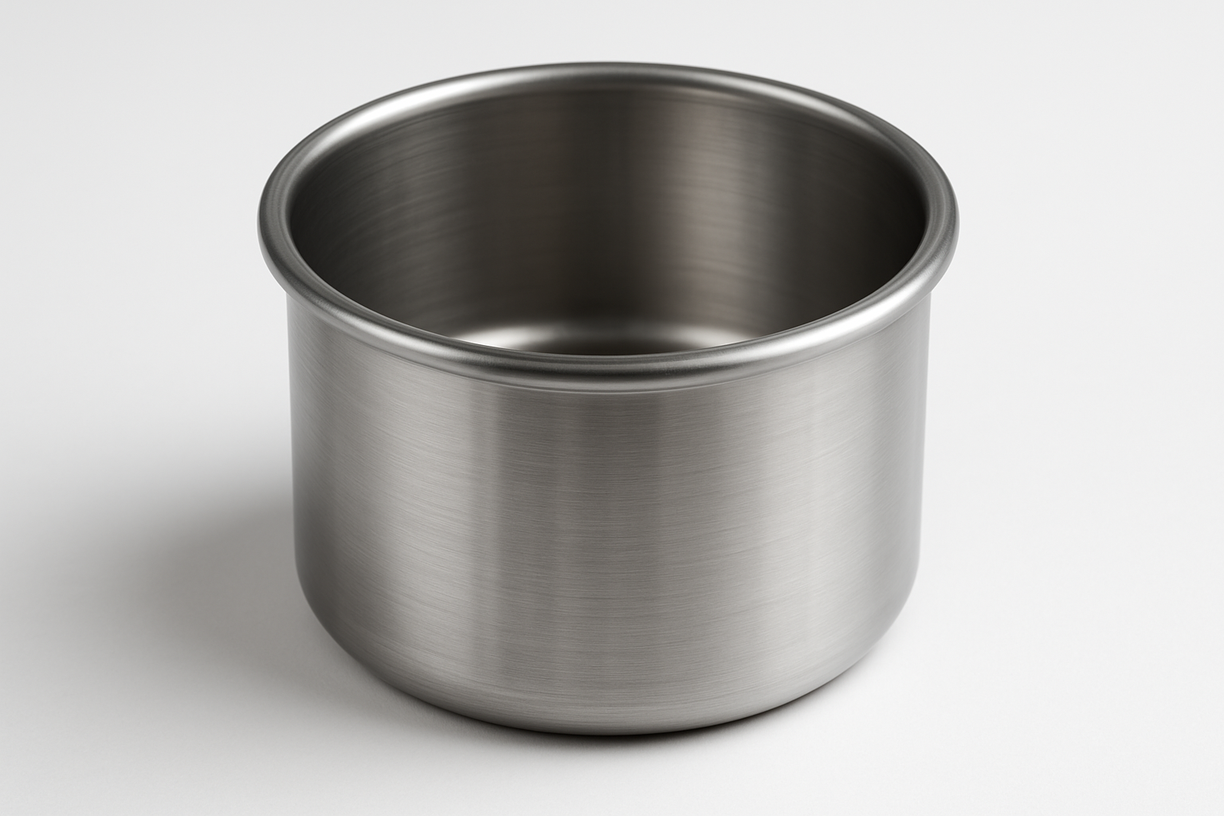
Deep Drawn Stamping Parts
The sheet metal is processed into hollow or deep structural parts by deep drawing process, which is widely used in containers, shells and liquid storage products.
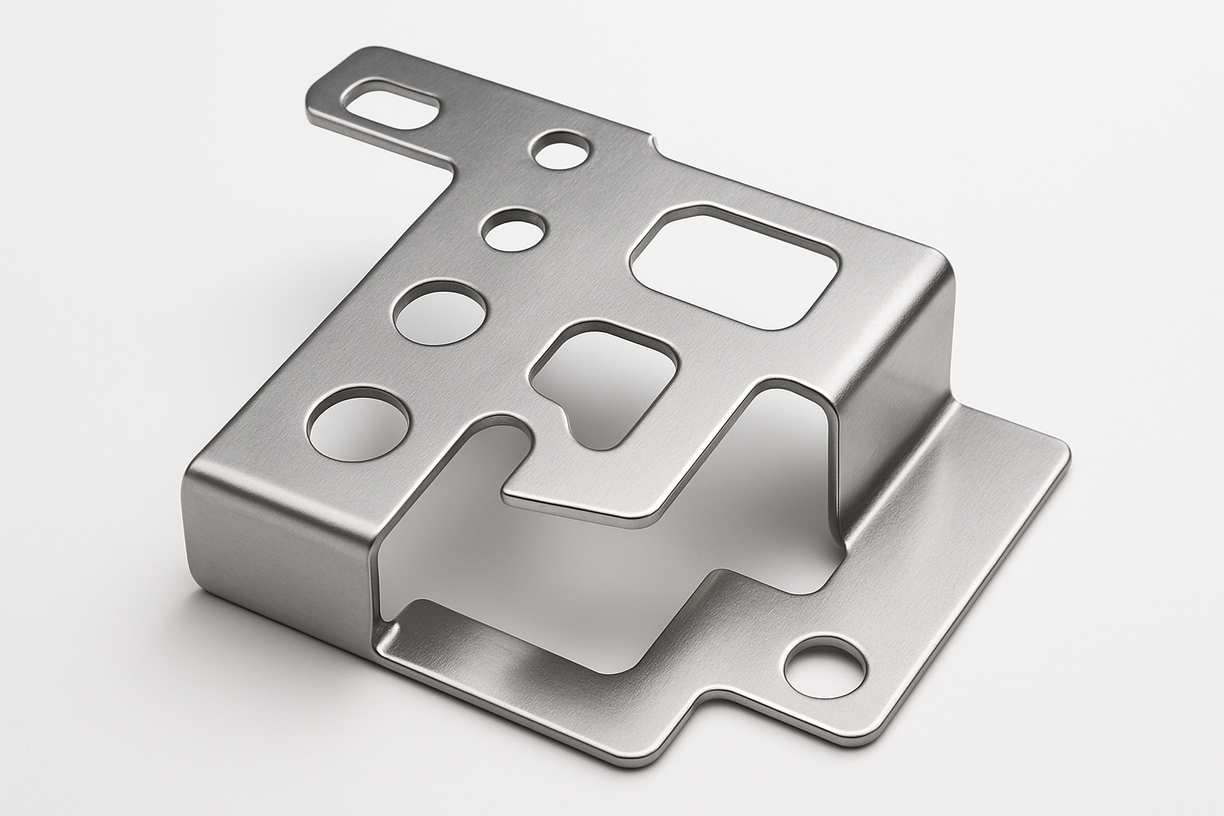
Precision Metal Stampings
It is processed by high-precision mold and meets micron-level tolerance control. It is suitable for high-end industries such as electronics, electricity and medical treatment.
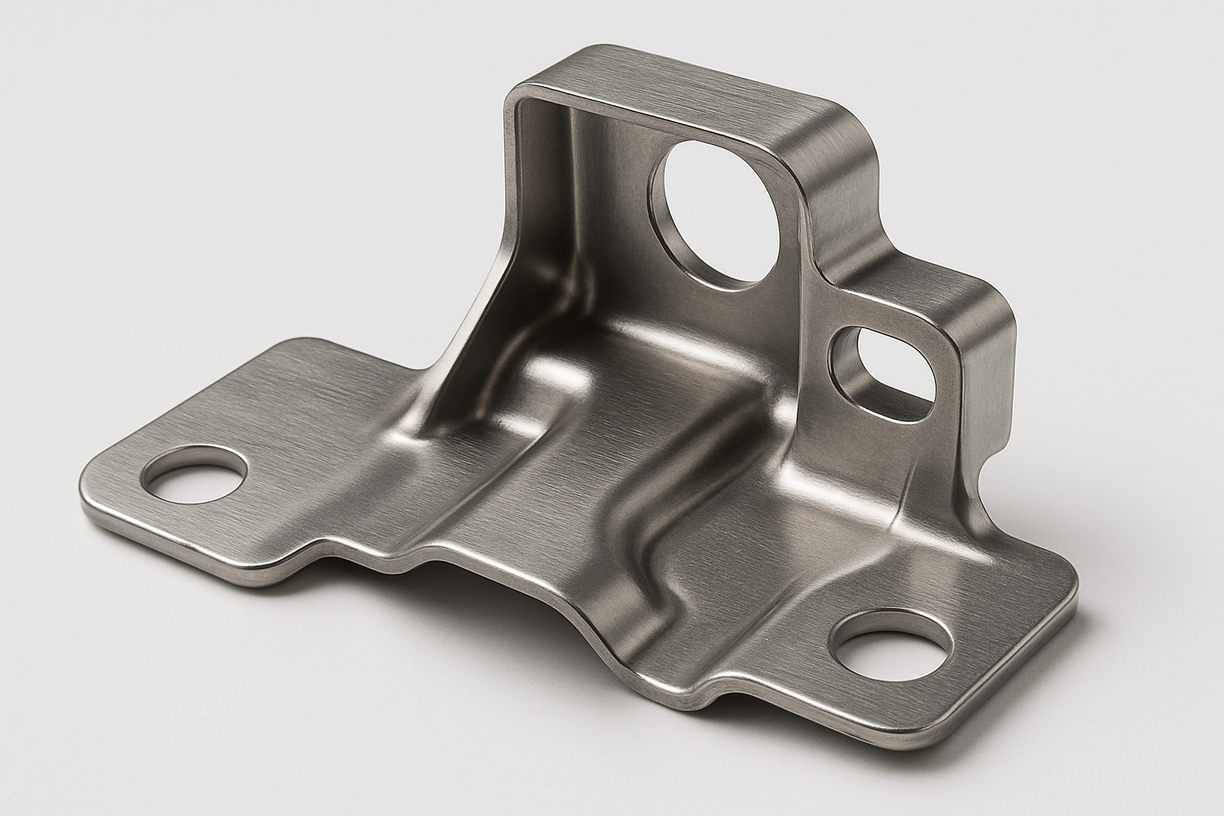
Stainless Steel Stampings
Made of stainless steel, has good corrosion resistance and structural strength, commonly used in kitchen equipment and outdoor products.
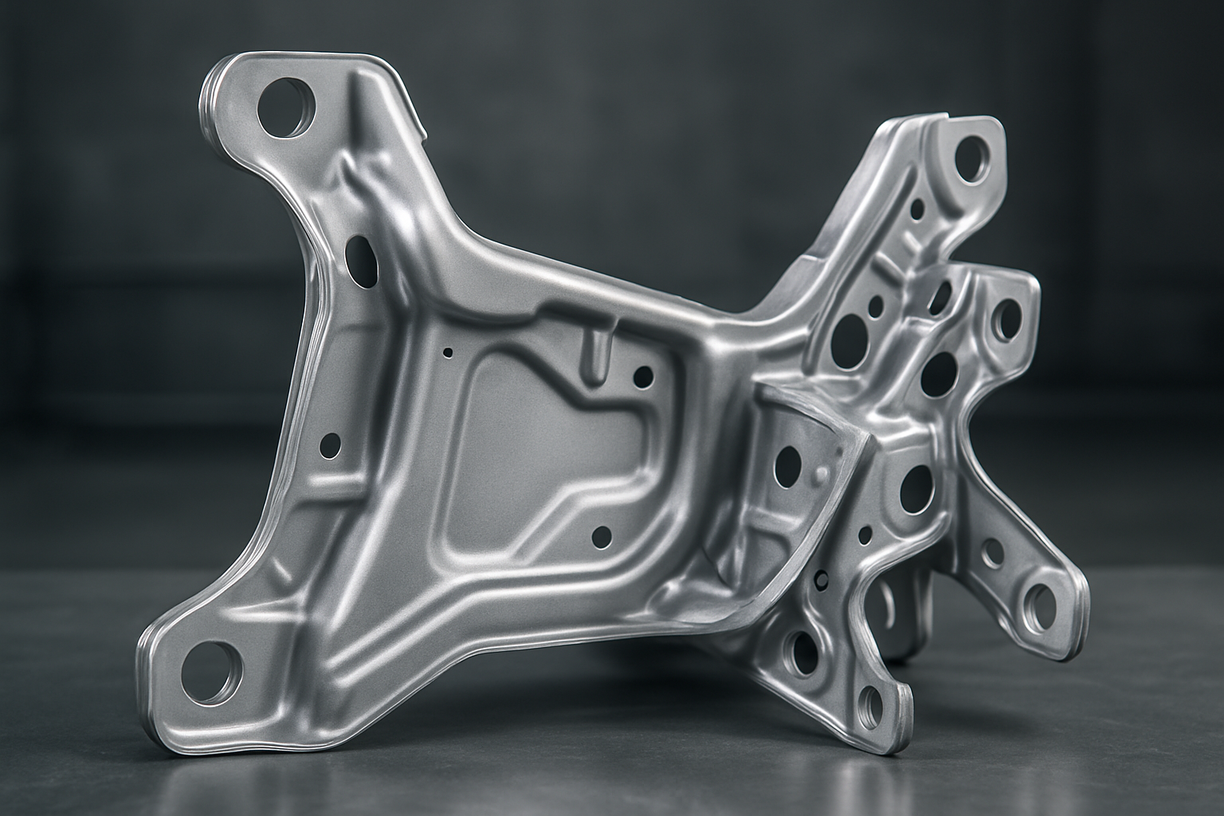
Automotive Stamping Parts
Customized stampings for automotive structural, safety and functional components to meet industry strength and conformance standards.
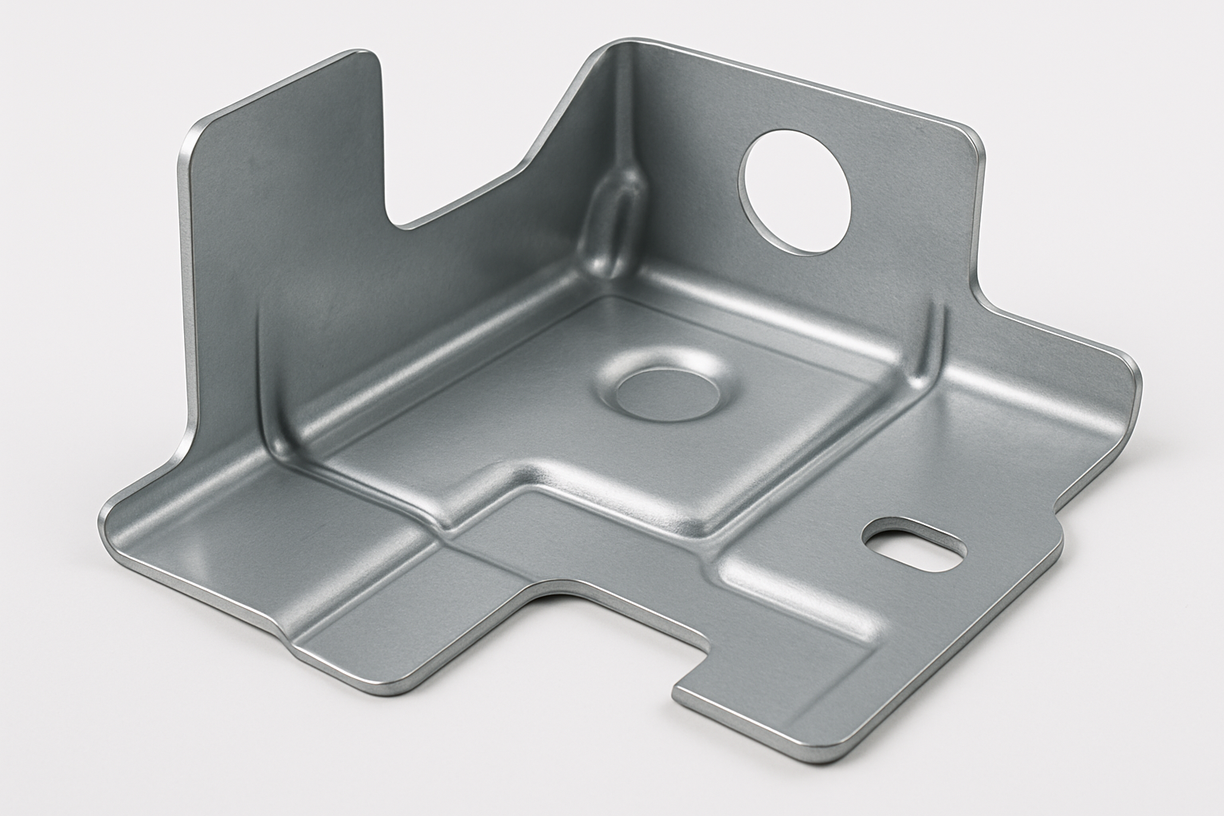
Sheet Metal Stampings
The use of thick metal sheet stamping formed structural parts, common in the equipment frame, chassis, industrial control box, etc. .
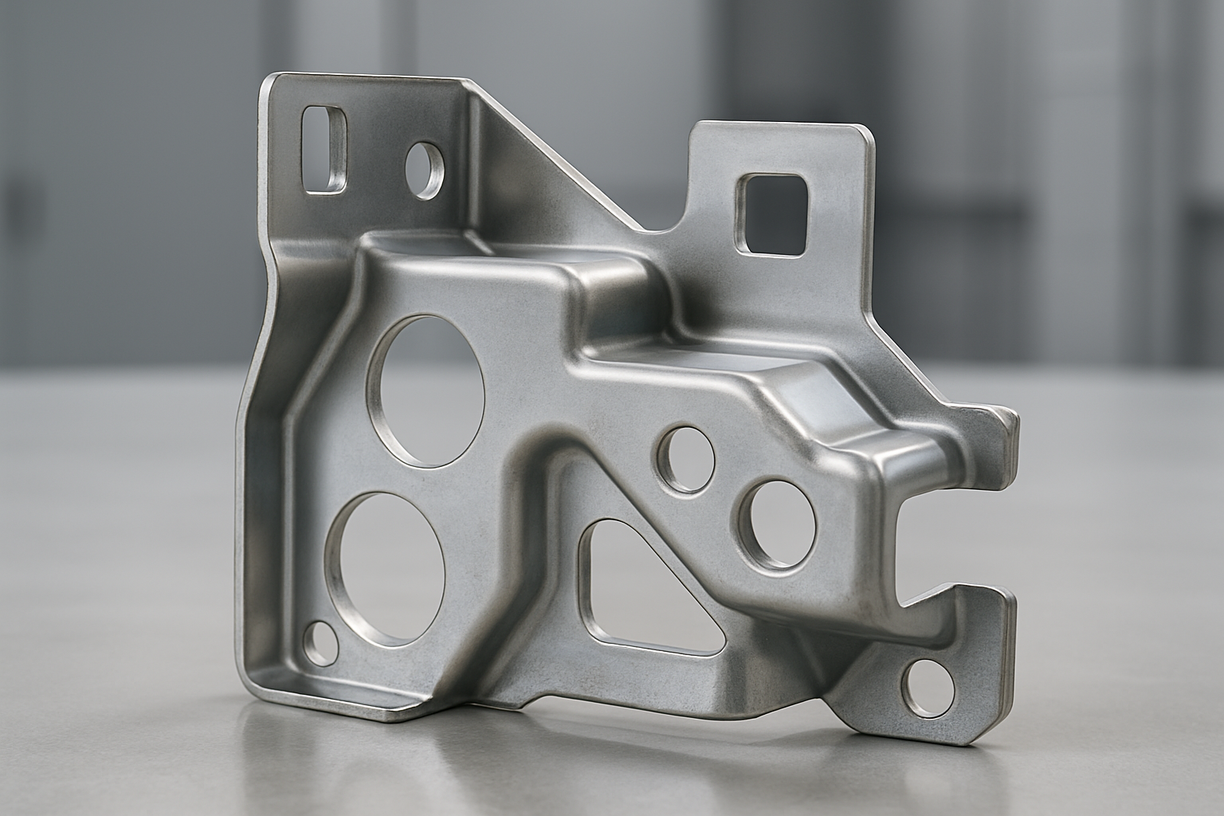
Custom Stamping Parts
According to customer drawings or samples customized production, support complex shapes, multi-channel process and personalized requirements.
Why Choose PRIME: Strategic Advantages in Metal Stamping Supply
Choosing the right metal stamping supplier is a strategic decision that directly impacts project success, product quality, and supply chain efficiency. At PRIME, we stand out through decades of expertise, advanced technology, uncompromising quality commitment, and a customer-first approach. With our proven experience, scalable manufacturing, precision assurance, and global logistics, PRIME is the trusted partner for all your stamping needs.
- 30+ Years of Proven Expertise: Established in 1993, our deep industry knowledge empowers us to tackle complex challenges and deliver consistent excellence.
- ISO 9001:2015 Certified Quality: Our entire process—from material sourcing to final inspection—follows rigorous international standards to ensure reliable output.
- 15 Advanced Production Lines: Our high-speed infrastructure handles large orders with agility and scale, keeping your production timeline intact.

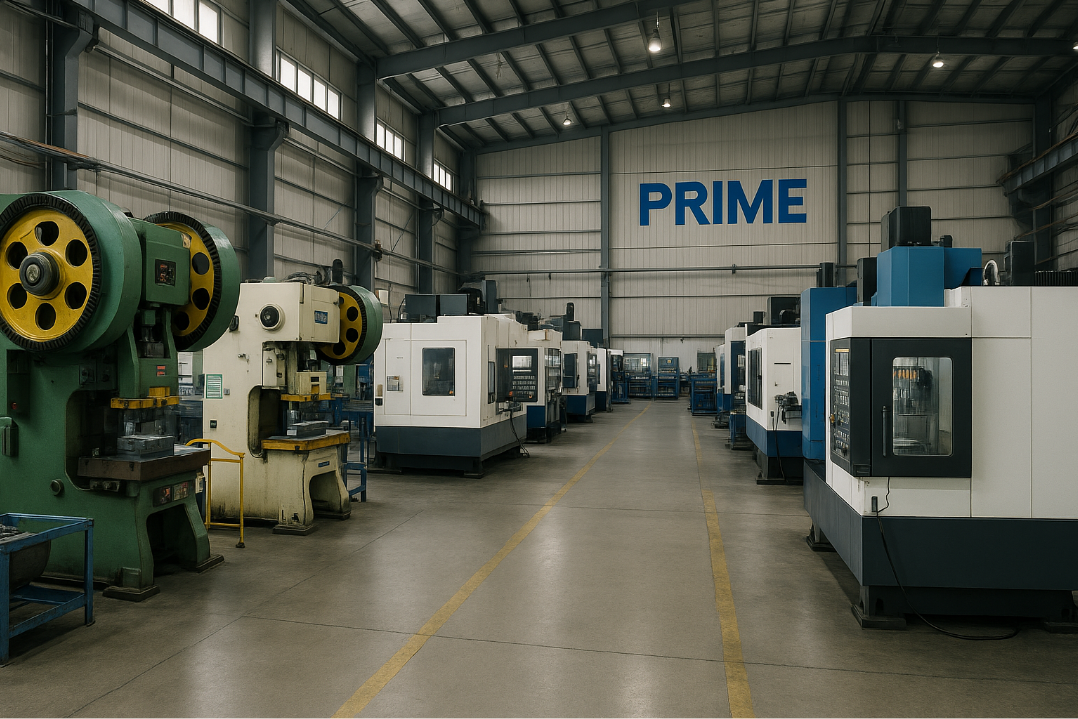
- Global Reach, Local Support: With exports to North America, Europe, the Middle East, and Australia, we ensure seamless international delivery and customs expertise.
- One-Stop Capabilities: Our comprehensive offering includes CNC parts, welded assemblies, castings, and fasteners—streamlining your supply chain with integrated solutions.
Ready to Experience the PRIME Difference?
Upload your drawings and specifications via our secure portal, and our engineering team will provide a full feasibility review and competitive quote within 24 hours.
Let’s build something extraordinary together.
Address Your Concerns: FAQ about stamping parts
To further assist our customers and provide comprehensive information, we have compiled a list of frequently asked questions about stamping parts and our services. Our goal is to solve common problems and provide clear, concise answers that will give you knowledge and confidence in your purchasing decisions, directly addressing the pain points of poor communication and lack of clarity.
What types of metal can Prime stamp?
Prime has extensive experience stamping stainless steel (304,316) , carbon steel (SPCC, SECC) , aluminum alloy (5052,6061) , copper, brass and galvanized steel.Our material selection guide provides detailed insights on these materials.
How does PRIME ensure the quality of stamping parts?
Prime ensures quality through a multi-stage quality assurance process: incoming inspection (MTRS) , in-process statistical process control (SPC) , 100% online visual inspection, and final CMM validation. All parts are certified for compliance with ISO 9001:2015.
Can PRIME handle complex part geometry and tight tolerances?
Yes, PRIME uses advanced tools, including five-axis NC and EDM processes, to handle complex part geometry and tight tolerances (typically down to ± 0.01 mm) , achieving ± 0.005 mm accuracy of die features. This meets the requirements of challenging applications.
What is the difference between progressive die stamping and deep drawing stamping?
Progressive die stamping, which performs sequential operations within a single die, is ideal for high-volume, smaller parts.
Deep drawing can produce seamless, hollow parts from flat metal, suitable for components that require uniform wall thickness and no welds.
Does Prime offer custom tools?
Yes, we offer a full range of custom tooling and mould making services. Our process includes collaborative design review, adoption of 3D CAD and FEA simulations, rapid prototyping tooling for early verification, high precision machining, and advanced surface treatments to extend tool life. We ensure that tools are perfectly tailored to your part specifications and throughput, addressing concerns about limited customization.
Do You Support Export Service? How is the product packaged?
We have many years of export experience, products exported to North , Europe, the Middle East, Australia and other regions, familiar with various export processes and standards. All products will be rust-proof, dust-proof treatment before packaging, and the use of thickened cartons, foam, plastic bags and other multiple protective packaging, if necessary, with pallet transportation, to ensure that the product is not damaged during long-distance transportation. At the same time we can provide CO, Form a, Form E and other relevant export documents.
Our Factory Insight

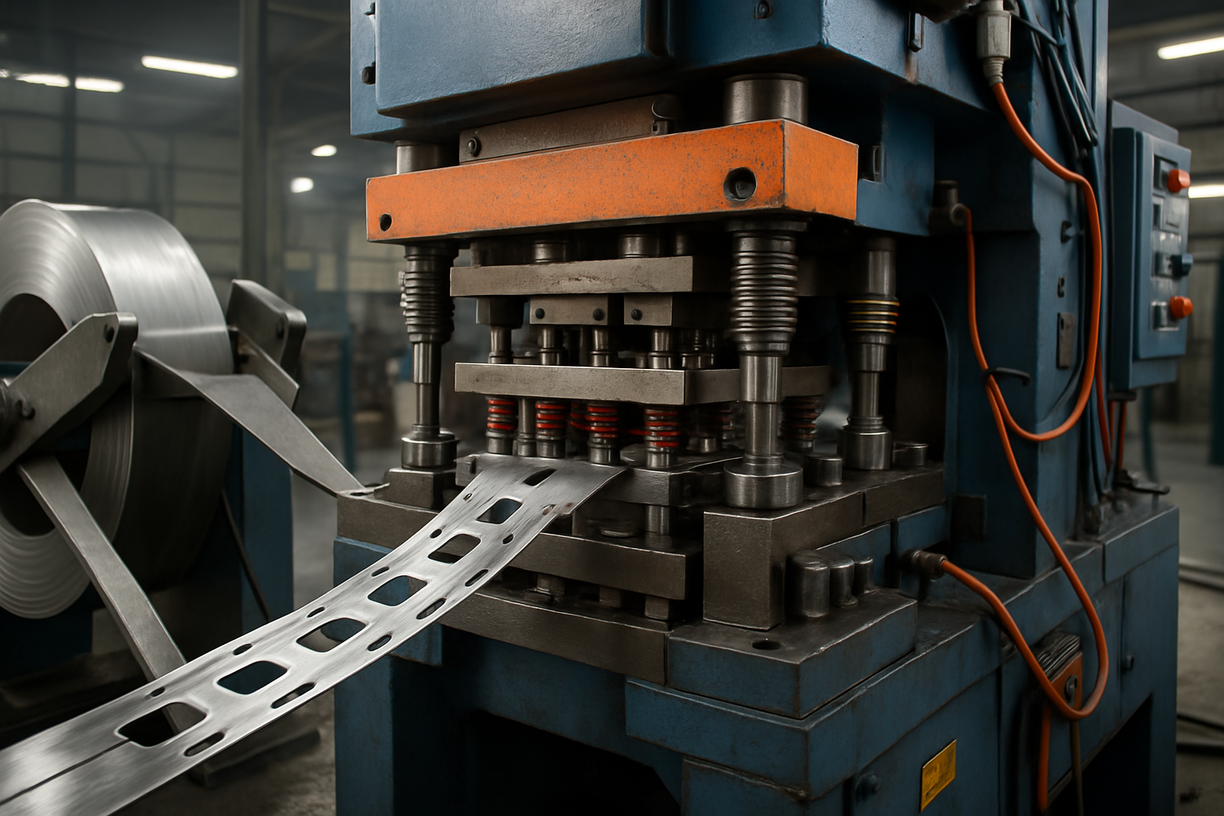




- Ⅰ:What is a metal stamping part?
- Ⅱ:Reveal Stamping Parts And Our Processes
- Ⅲ:Material Selection Guide
- Ⅳ:Surface Treatment Options
- Ⅴ:Tooling and Die Making
- Ⅵ:Our Commitment to Quality
- Ⅶ:Common Stamping Defects
- Ⅷ:Diverse Applications
- Ⅸ:How to Choose the Right Supplier
- Ⅹ:Design for Manufacturability (DFM)
- Ⅺ:Stamping vs. CNC Machining
- Ⅻ:Global Supply Chain & Logistics
- XIII:Prime R&D and Innovation
- XIV:Value-Added Services
- XV:More Information On Custom Metal Stampings
Ⅰ:What is a metal stamping part?
Metal stamping parts are precision-manufactured components created through a cold-forming process that uses dies and pressure to shape flat metal sheets into specific forms. This process involves feeding blank or coil metal into a stamping press, where a specialized tool (die) performs a variety of operations such as punching, blanking, bending, embossing, coining, and drawing.
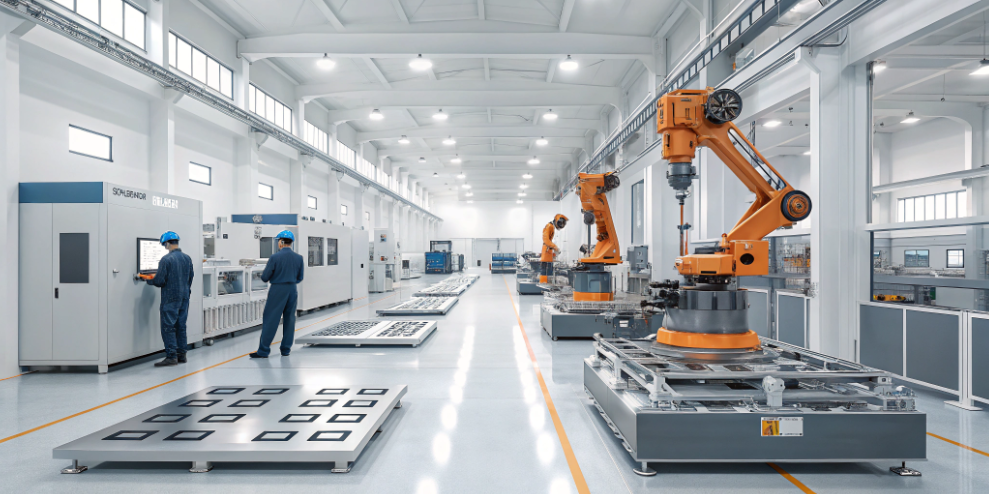
Metal stamping is the most cost-effective manufacturing method for mass-producing metal components, offering outstanding repeatability, dimensional accuracy, and material efficiency. It is widely used in industries such as automotive, electronics, aerospace, medical devices, and consumer electronics, where fast production of complex geometries with tight tolerances is essential.
Key Characteristics of Metal Stamped Parts
• Dimensional Accuracy
Modern stamping operations can achieve tight tolerances of ±0.005mm (±0.0002 inches), making them ideal for precision-critical applications. This level of precision is attained through high-accuracy tooling, advanced press control, and rigorous quality assurance systems.
• Material Versatility
Stamping can be applied to a wide range of materials including stainless steel, carbon steel, aluminum alloys, copper, brass, titanium, and specialty alloys. Thicknesses typically range from 0.1mm to 6mm, with custom solutions available for thicker materials.
• Complex Geometry
Advanced stamping techniques create 3D forms, deep drawn components, and parts with multiple bends, holes, or features — all in one operation. Progressive die stamping allows for continuous complex fabrication with high precision.
• High Production Efficiency
Stamping presses can operate at speeds of 100–1500 strokes per minute, depending on material and part complexity. This makes them ideal for large-scale manufacturing requiring millions of identical units.
Common Types of Metal Stamping Operations
- Punching: Cutting out the external contour of parts from metal sheets, forming a blank for further shaping.
- Perforating: Creating holes, slots, and cutouts using shaped punches and dies.
- Bending: Deforming metal along straight or curved axes to form structural angles and flanges.
- Drawing: Forming hollow, cup-shaped components with uniform wall thickness by pulling metal into a die cavity.
- Embossing: Adding raised or recessed features to the surface for function or aesthetics.
- Coining: Applying high pressure to form detailed, smooth-surfaced features with excellent dimensional fidelity.
Industries That Rely on Metal Stamping
• Automotive
Body panels, brackets, engine components, electrical connectors, and reinforcements represent some of the largest applications of stamped metal parts.
• Electronics
Connectors, shielding, heat sinks, battery contacts, and casings for consumer and industrial electronics.
• Medical Devices
Surgical tools, implantable parts, and diagnostic housings requiring biocompatibility and precision.
• Aerospace
Structural components, brackets, clips, and cabin fittings built to meet stringent weight and performance standards.
• Home Appliances
Internal mechanisms, mounting brackets, decorative trims, and functional hardware for consumer and commercial appliances.
Ⅱ:Reveal Stamping Parts And Our Processes
Whether you are purchasing for the first time Stamping parts,Still wanting to deepen your understanding, this section is intended to provide you with comprehensive insight into the world of metal stamping and how PRIME can ensure the success of your projects. We address fundamental issues, explain key processes, and highlight how our solutions directly address common challenges faced by industrial buyers. Our goal is to provide you with the knowledge to help you make informed decisions and guide your purchasing journey with confidence.
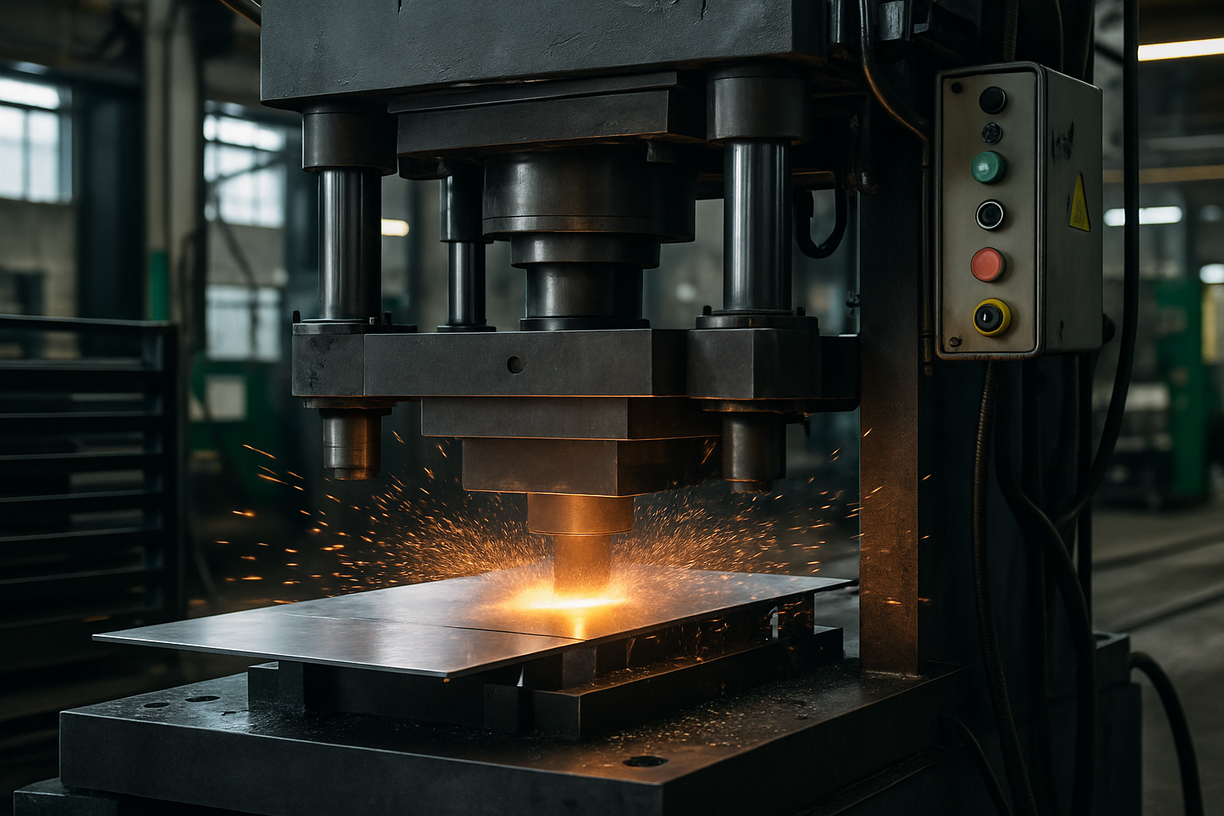
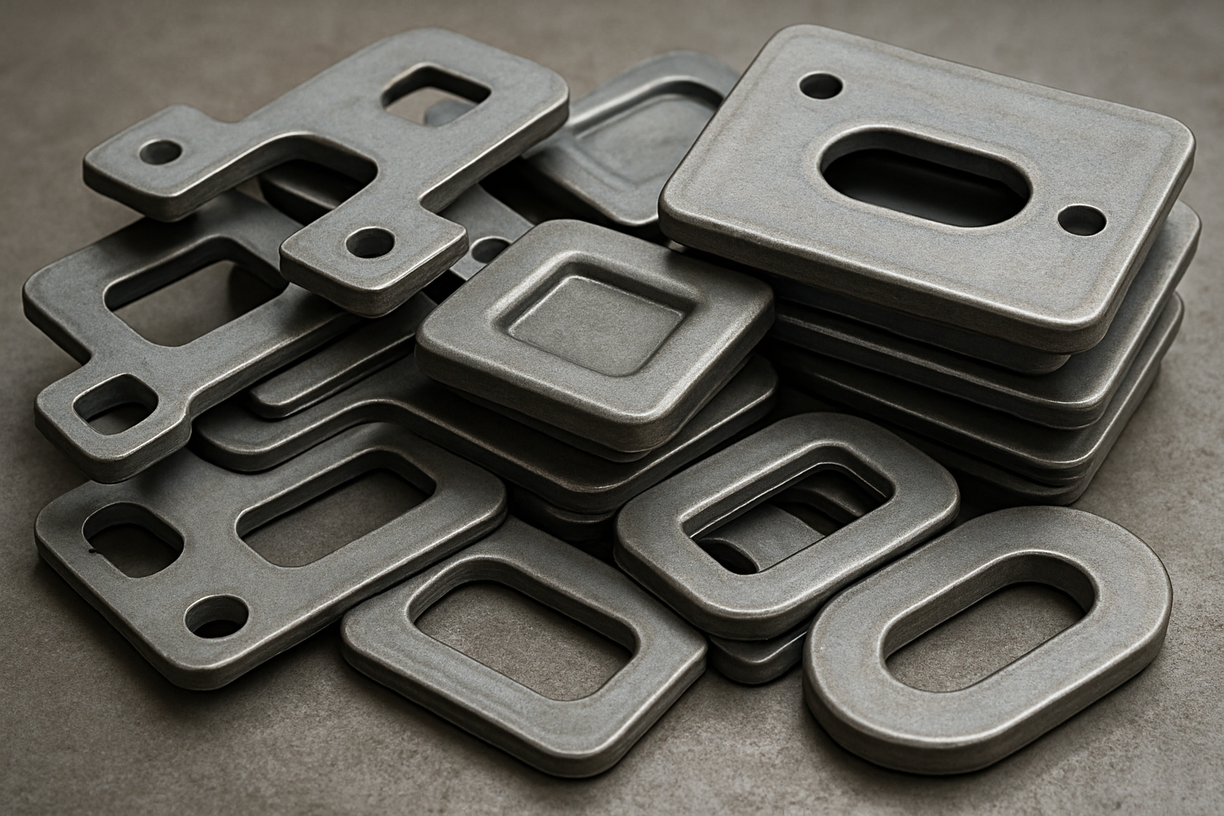
What is metal stamping? Basic understanding
Metal stamping is a manufacturing process that uses dies and presses to convert flat metal into specific shapes by stamping, cutting, bending, and forming operations. This cold forming technique involves putting blank or coiled metal into a press where a special tool (die) forms the metal through various operations. Metal stamping is efficient in large-scale production, providing excellent repeatability and cost-effectiveness for car parts, electronic component, electrical appliances and medical equipment.
Choosing the right stamping process: tailor-made solutions for optimal performance
The selection of the most appropriate stamping method is essential to achieve a perfect balance of cost-effectiveness, product quality and production speed. At Prime, we don't believe in one-size-fits-all solutions. Our engineering team will carefully analyze the unique needs of your project to recommend and implement the best stamping techniques. Here is an overview of the key processes at our disposal:
1. Progressive die stamping: high volume efficiency engine
Progressive die stamping is ideal for small to medium-sized complex parts in mass production, such as electrical connector, complex brackets, and automotive parts. When a metal strip passes through multiple dies at each press, it performs a series of operations in sequence。 Prime utilizes custom multi-cavity progressive dies equipped with automatic stacking and inline visual inspection systems to ensure continuous, high-quality output with excellent consistency, reduced unit costs, and accelerated production.
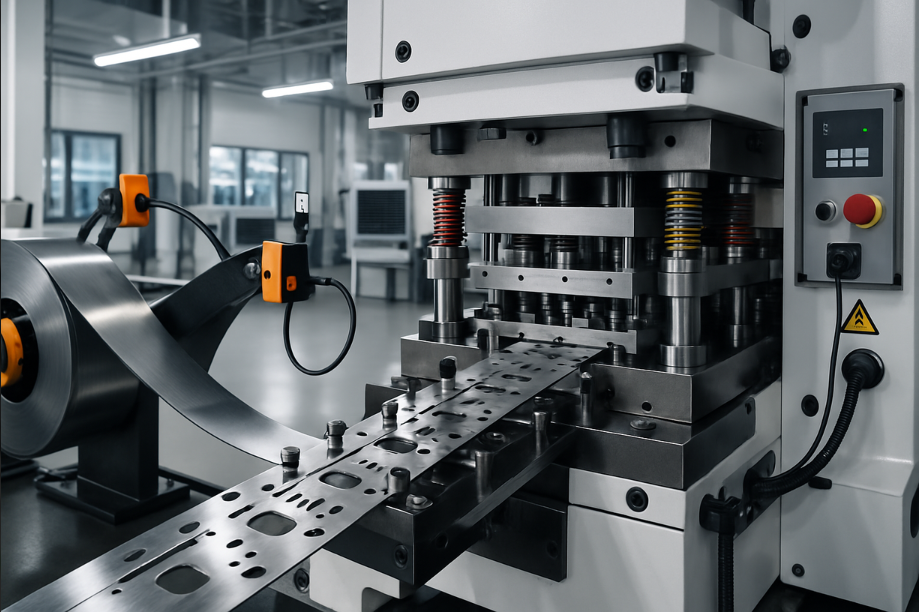
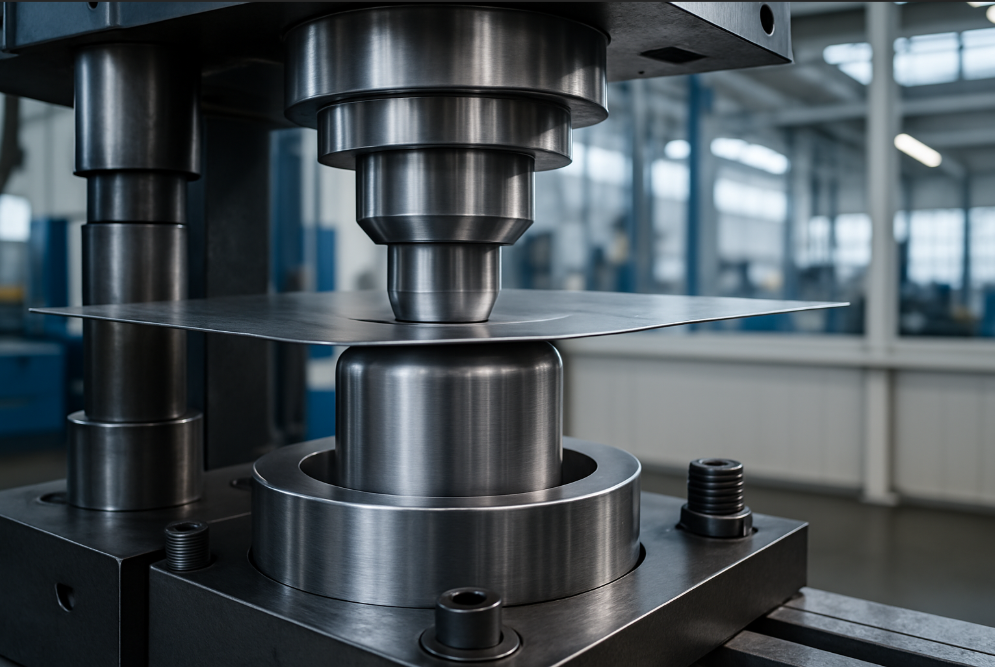
2. Deep drawing stamping: manufactures seamless, rugged parts
Deep draw stamping creates seamless, hollow parts with uniform wall thickness, such as battery cases and medical trays, by pulling flat metal plates into the mold cavity without wrinkling or tearing. Prime's precise blank feeding, precise blank support force control and advanced progressive drawing station provide wrinkle-free parts with superior fatigue resistance, perfect aesthetics and optimized performance.
3. Compound die stamping: the precision of a single stamping
Compound die stampings are ideal for flat parts such as gaskets, scrubbers, and spacers, where blanking and piercing operations are performed simultaneously in a single punch to ensure precise dimensions and clean edges. Prime utilizes EDM-made composite tools and automated waste disposal systems to achieve significant cost savings, superior accuracy (typically ± 0.01 mm) , and maximum efficiency (up to 60 standard deviations) .
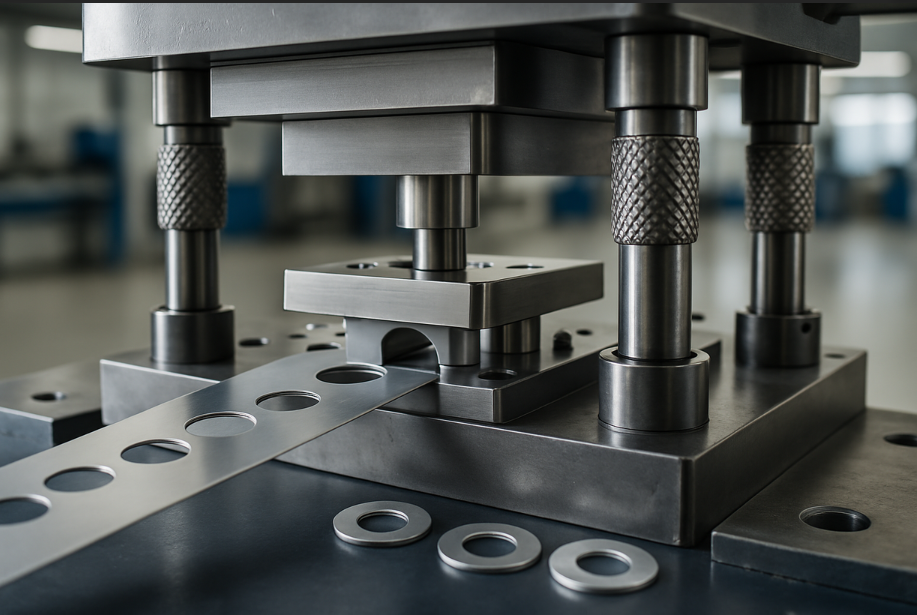
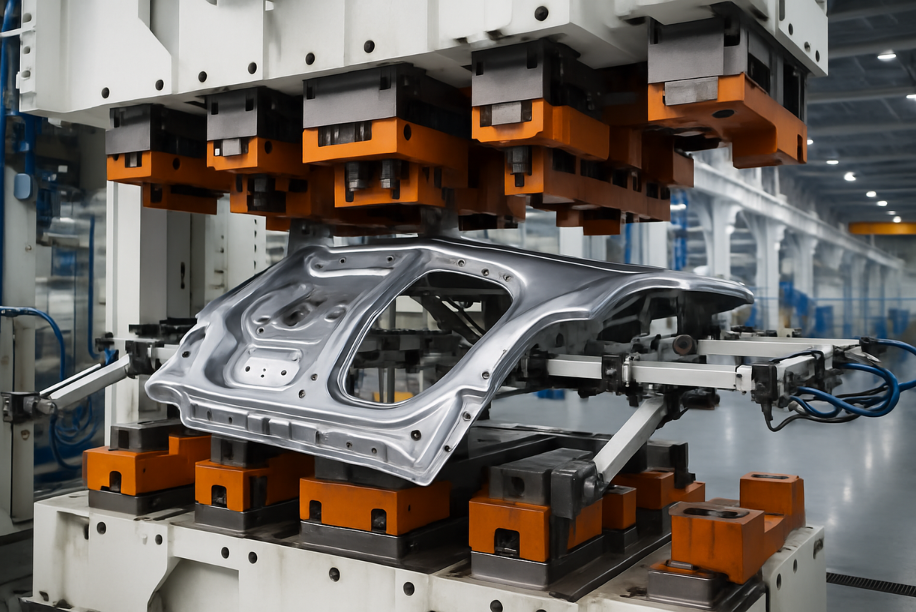
4. Transfer die stamping: master large, complex geometries
Transfer die stamping mechanically transfers the workpiece through a series of individual dies to produce large, complex components such as structural brackets and complex automotive parts. Prime's robot-driven transfer line integrates advanced handling mechanisms and visual inspection to achieve unrivalled accuracy (± 0.02 mm) and repeatability, providing unrivalled complexity and flexible production.
Expert advice for curious buyers
To ensure that we recommend the most cost-effective and efficient process for your project, we encourage you to share your annual production forecast and key tolerance requirements early in the consulting phase. This advance information allows us to fine-tune our solution to your needs, optimizing performance and budget.
Ⅲ:Material Selection Guide: The Foundation of Performance
Selecting the right material is a critical decision that directly impacts the performance, cost, and manufacturability of stamped parts. At PRIME, we provide expert guidance to help you navigate this complex process and ensure your material selection perfectly aligns with your application requirements. We analyze a wide range of materials to balance their unique properties, achieve optimal project results, and address traceability and compliance challenges.
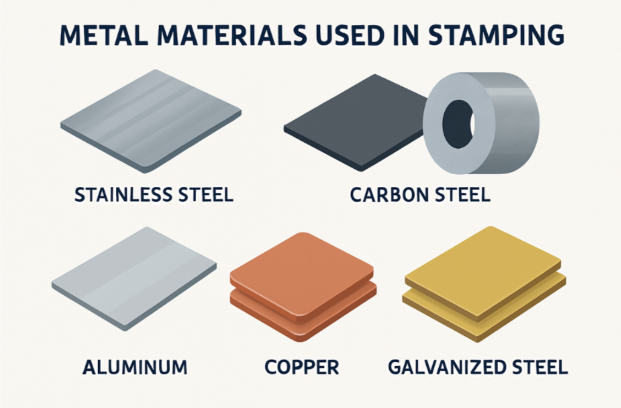
Common Metal Materials and Their Properties
| Material | Corrosion Resistance | Cost | Strength (MPa) | Typical Applications |
|---|---|---|---|---|
| Stainless Steel 304/316 | Excellent | Medium-High | ~500 Tensile | Medical devices, food equipment, marine components |
| Carbon Steel SPCC/SECC | Requires coating | Low | 250–350 | Electrical housings, automotive parts, structural frames |
| Aluminum 5052/6061 | Moderate | Medium | 200–310 | Heatsinks, aerospace parts, electronic enclosures |
| Copper & Brass | Fair | High | 210–350 | Electrical connectors, decorative trims, plumbing fittings |
| Galvanized Steel | Excellent | Medium | ~350 | Outdoor fixtures, HVAC components, construction materials |
How PRIME Helps You Make the Right Material Choice
Our support goes beyond just providing a list of materials. We offer a suite of services to ensure your selection is not only smart but optimized to your specific needs — directly addressing traceability and compliance challenges:
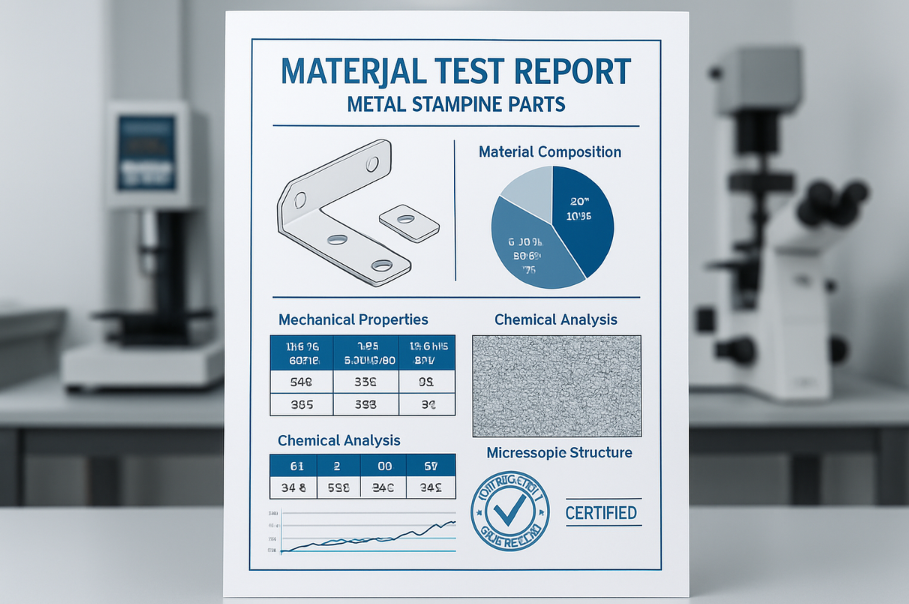
Material Test Reports (MTR) & Analysis
We provide detailed chemical and mechanical analysis for every batch of material we source. This ensures full traceability and verifies that all specifications and quality standards are met — giving you complete confidence in your parts’ integrity.
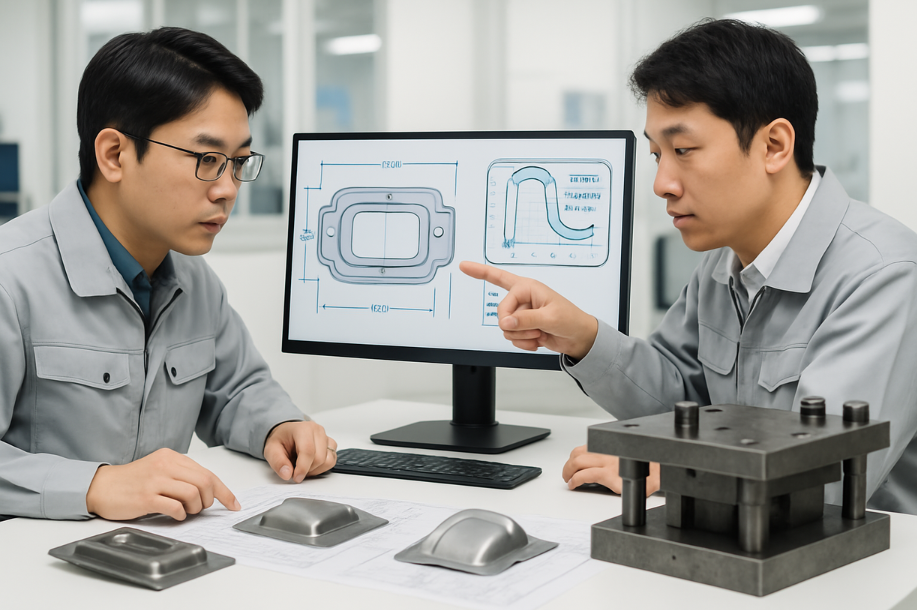
Design for Manufacturability (DFM) Support
Our engineering team offers expert advice on dimensional adjustments and material performance to improve formability, reduce scrap rates, and enhance overall manufacturing efficiency. This proactive approach saves time and cost by optimizing your production design.

Total Cost of Ownership (TCO) Analysis
We perform parallel cost modeling that goes beyond material price alone. Our TCO analysis includes scrap rates, processing costs, and downstream assembly labor — giving you a complete picture of total project cost and helping eliminate hidden expenses.
Ⅳ:Surface Treatment Options: Enhance Durability and Aesthetics
Surface treatments are essential to improve the functional performance and visual appeal of stamped parts. At PRIME, we offer a comprehensive range of treatments, each precisely tailored to meet specific industry standards and application requirements. Our expertise ensures your parts not only look their best but perform at their peak in intended environments.
- Electroplating (Zn, Ni, Cr): Zinc, nickel, and chrome coatings meet ASTM B633, with salt spray resistance exceeding 1000 hours.
- Powder Coating: Durable, UV-resistant coatings matched to RAL/PANTONE. Ideal for automotive and appliance surfaces.
- Anodizing (Al): 15–25μm oxide layers for aluminum parts, providing enhanced wear and corrosion protection with optional color dyeing.
- Industrial Painting: ISO 12944-compliant multi-layer epoxy/polyurethane systems for harsh environments.
- Passivation: Nitric or citric acid treatments to enhance stainless steel corrosion resistance, ideal for food/medical applications.
- Deburring and Polishing: Advanced ultrasonic/laser techniques ensure burrs < 0.01 mm are removed. Mirror polishing improves assembly and aesthetics.
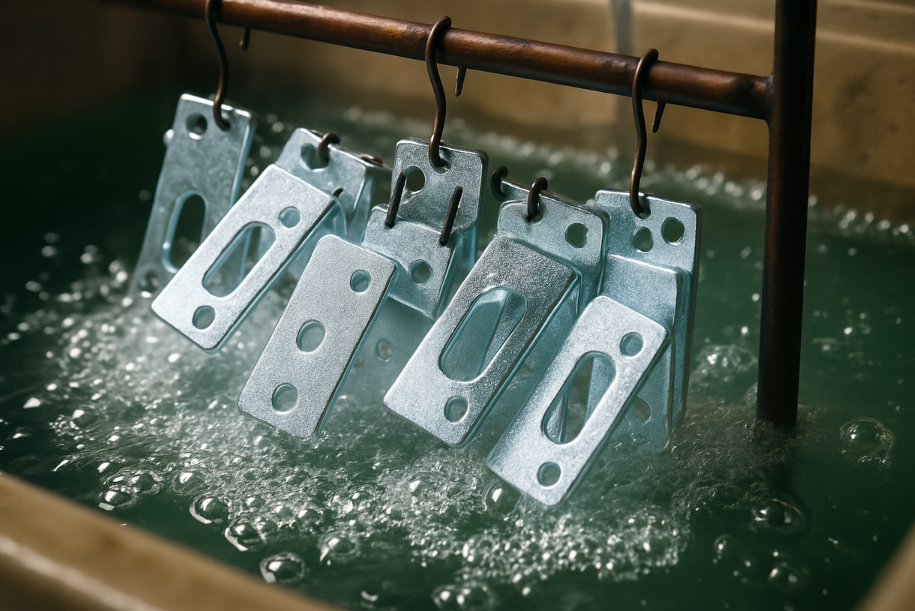
Ⅴ:Tooling and Die Making: Precision at the Core
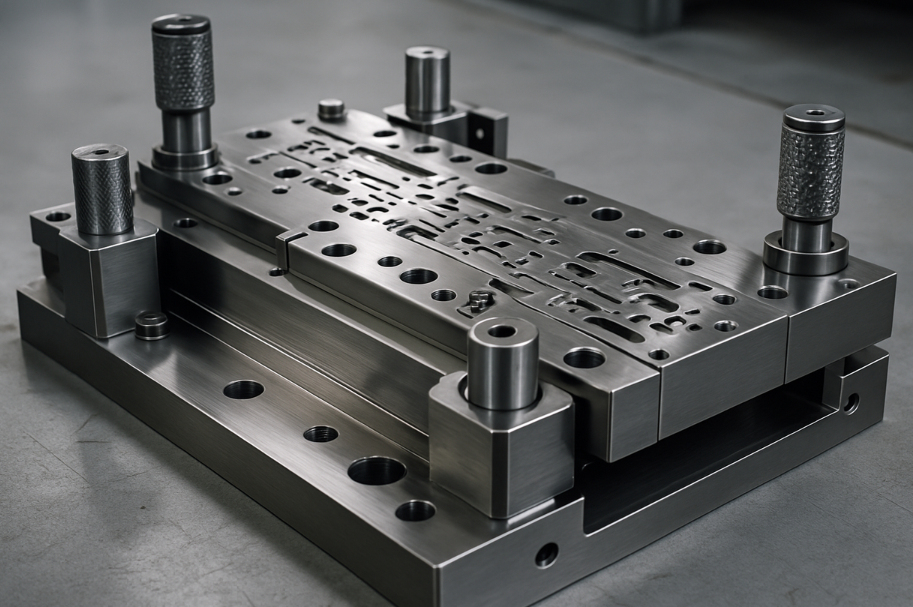
Precision-stamped parts require precision tooling. At PRIME, our in-house tooling and die capabilities are a cornerstone of our commitment to quality. We manage the entire tool lifecycle from initial CAD design to simulation, manufacturing, and maintenance.
- Collaborative Design Reviews: CAD + FEA simulations identify flow defects before production, coordinated with your engineering team.
- Rapid Prototyping: 5-day aluminum prototype tools to test shapes/dimensions under real stamping environments before steel tooling.
- High-Precision Machining: 5-axis CNC and EDM with ±0.005 mm tolerance using steels like H13/D2.
- Advanced Surface Treatments: Nitriding & PVD (e.g. TiAlN) to extend tool life by 40% and reduce galling.
- Tryouts & Validation Runs: Sample stamping at production tonnage, with CMM reporting and detailed run charts.
Ⅵ:Our Commitment to Quality
At PRIME, quality is integrated into every phase—not just final inspection. Our robust QA system ensures every part meets the highest precision and durability standards, addressing inconsistencies at the source.
- Incoming Material Inspection: Heat tracking and MTR reviews to verify chemistry and mechanical specs before production.
- In-Process SPC: Automated data capture and control charts with alarms for deviations in press force, cycle time, etc.
- 100% Online Visual Inspection: Inline cameras identify burrs, defects, or blemishes in real-time during production.
- Final CMM Validation: Every shipment undergoes dimensional confirmation using advanced coordinate measuring machines.
- Certificate of Conformance (COC): Each batch includes a detailed COC verifying materials, process, and inspection for full traceability.

Ⅶ:Common Stamping Defects & PRIME’s Prevention Strategy
Metal stamping is a complex process that, if not tightly controlled, can lead to costly defects. At PRIME, we proactively prevent these issues through advanced tooling, strict process control, and real-time quality monitoring.
1. Cracking & Tearing
Description: Occurs when material is stretched beyond formability limits, often at sharp corners or high-stress zones.
PRIME Solution: FEA simulation during DFM analysis, material selection with high ductility, and tonnage-controlled presses prevent over-stretching.
2. Wrinkling
Description: Uncontrolled folds or wrinkles during deep drawing or compression zones.
PRIME Solution: Precision blank holder force control, guided bead/radius tooling, and progressive forming stages ensure smooth material flow.
3. Burrs
Description: Sharp edges from excessive die clearance or tool wear.
PRIME Solution: In-house die manufacturing with tight tolerances, surface-treated tooling, and ultrasonic/laser deburring to eliminate burrs under 0.01mm.
4. Dimensional Inaccuracy & Springback
Description: Deviations caused by elastic recovery or material variation.
PRIME Solution: Simulation-based die compensation, real-time SPC, and final CMM inspection to guarantee tolerance conformance.
5. Surface Scratches & Dents
Description: Visual defects from poor handling, tool contamination, or lack of lubrication.
PRIME Solution: Automated feeding, tool cleaning schedules, optimized lubrication, and 100% inline visual inspection prevent such damage.
Ⅷ:Diverse Applications: The Impact of PRIME Stamping Components
Metal stamping components are essential across industries. Their precision, cost-efficiency, and high scalability make them ideal for global manufacturing. At PRIME, we deliver tailored solutions that meet sector-specific technical standards and production demands.
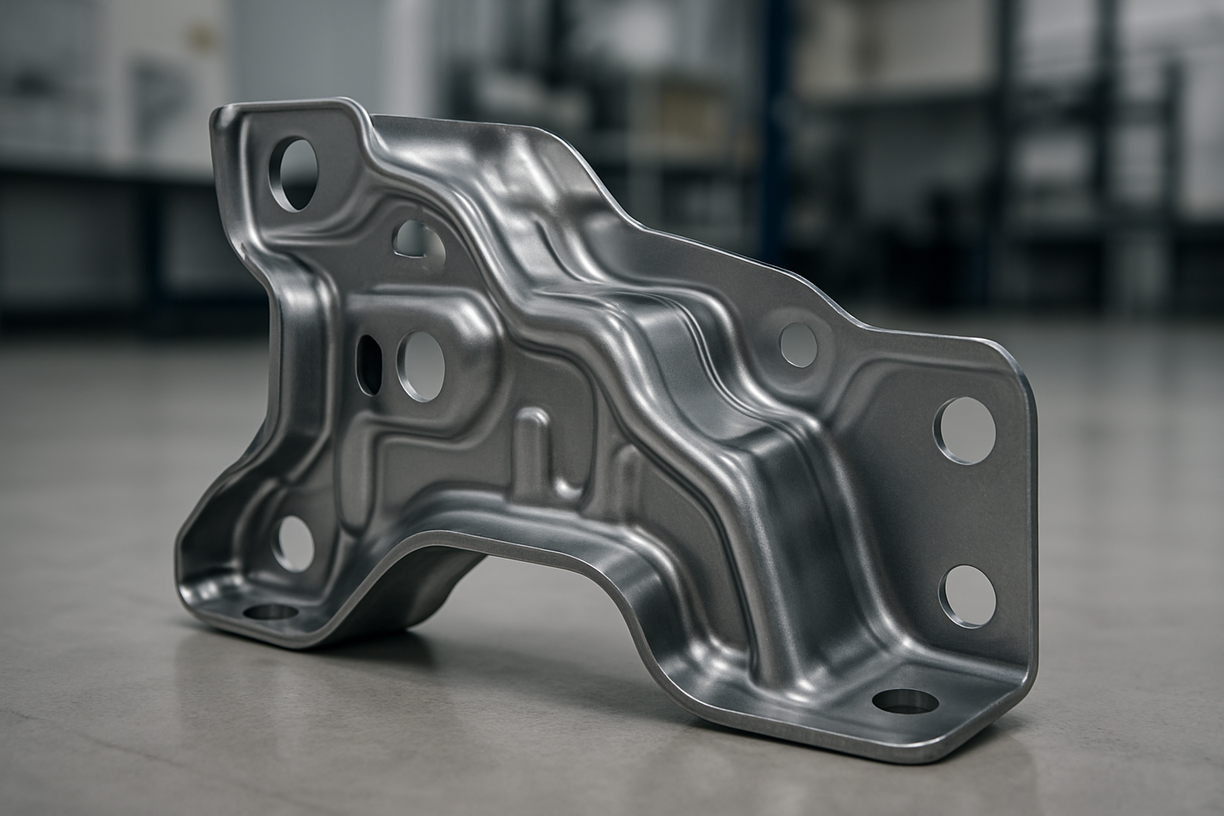
1. Automotive Industry
Impact: Essential for vehicle structure and safety-critical parts.
PRIME’s Role: We produce large-volume stamped components including brackets, panels, and electrical housings with automotive-grade tolerances.
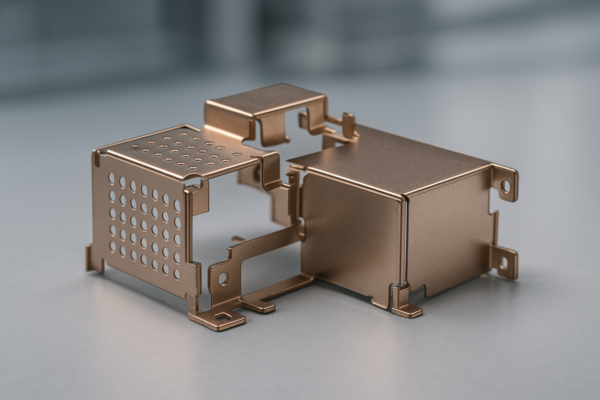
2. Electronics & Consumer Goods
Impact: Used in connectors, battery terminals, heat sinks, and housings.
PRIME’s Role: We offer miniature copper/brass stampings with excellent conductivity and surface finishing for compact electronics.
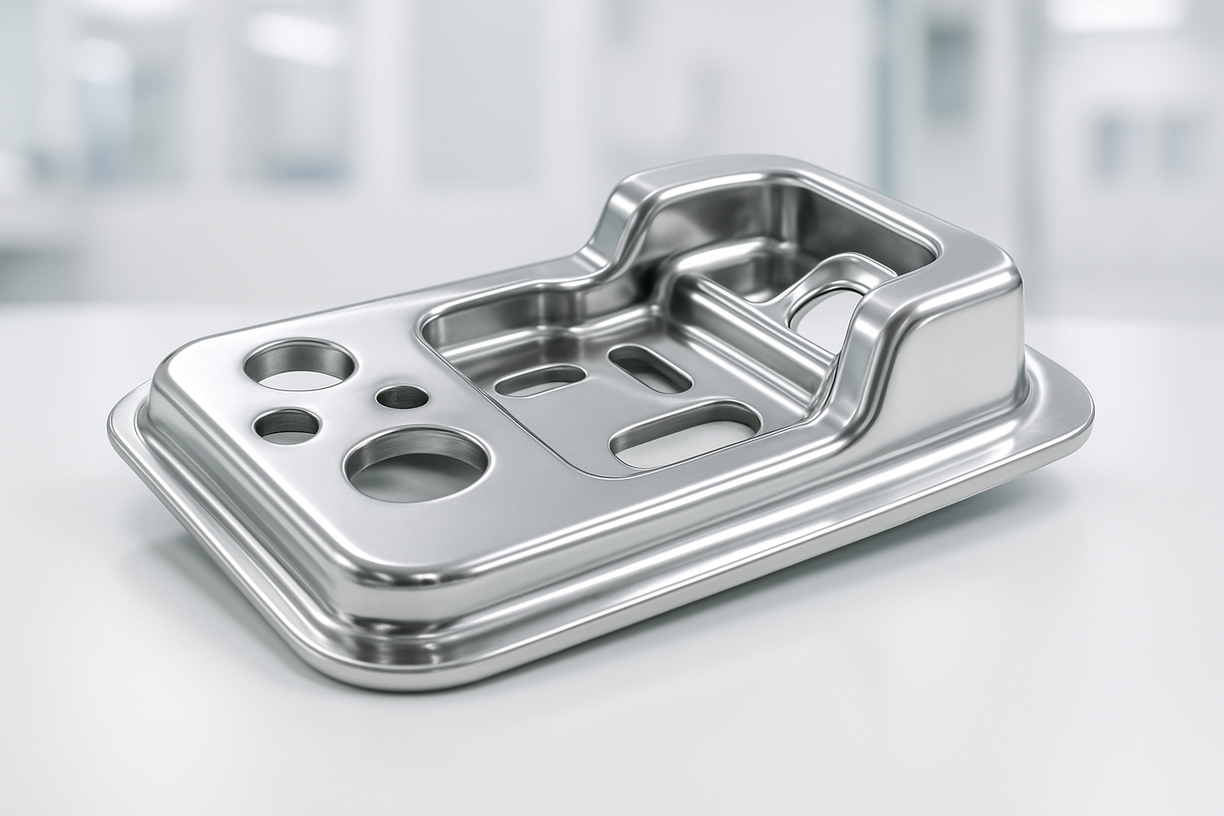
3. Medical Devices
Impact: Demands high surface quality and biocompatibility.
PRIME’s Role: We provide burr-free 304/316 stainless steel parts with Ra < 0.8 μm for surgical tools and sterile environments.
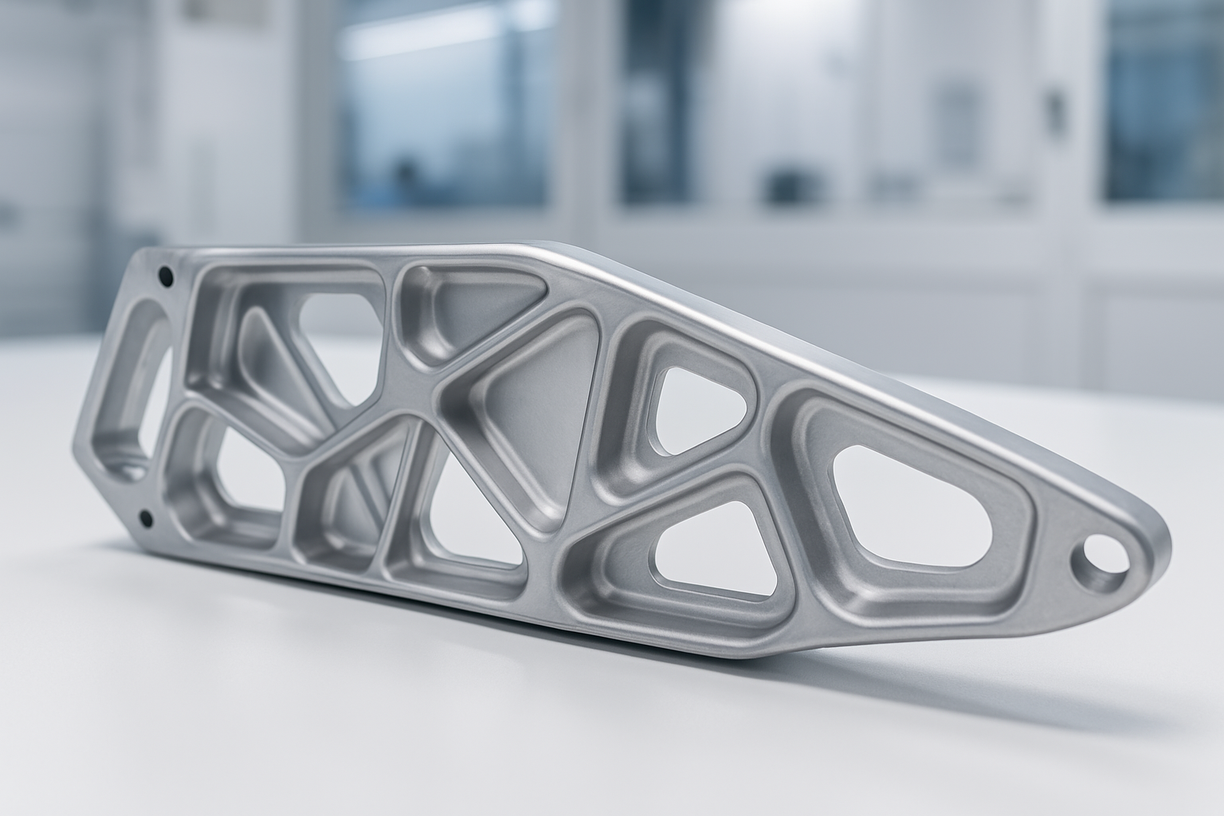
4. Aerospace & Defense
Impact: Requires strength-to-weight optimization and fatigue resistance.
PRIME’s Role: Using aerospace alloys and advanced inspection, we ensure dimensional accuracy and long-term structural reliability.

5. HVAC & Appliances
Impact: Requires durable, visually clean and corrosion-resistant parts.
PRIME’s Role: Fan housings, structural brackets and panels with powder-coated or zinc-finish for interior and exterior appliances.
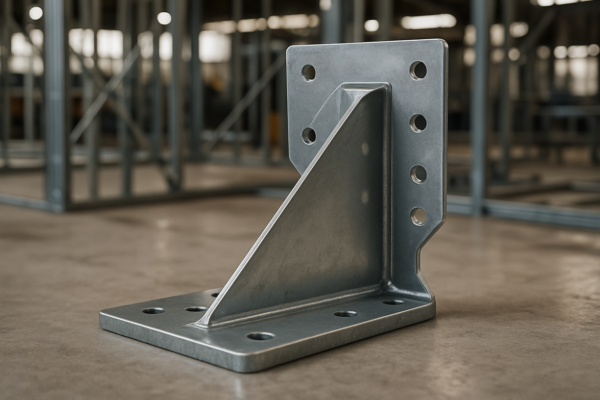
6. Construction & Architectural Hardware
Impact: Critical for structural connectors, hinges, anchors, and framing parts.
PRIME’s Role: Rugged parts stamped from galvanized steel with protective finishes that endure outdoor conditions and structural loads.
Whether you're in aerospace, consumer electronics, or construction — PRIME offers scalable, accurate, and cost-efficient metal stamping tailored to your needs.
Not listed above? Our engineers will gladly assess your drawings and create a customized solution for your unique industry.
Discuss Your ApplicationⅨ:How to Choose the Right Stamping Parts Supplier
Choosing the ideal stamping parts supplier is a critical business decision that can significantly impact your product quality, manufacturing efficiency, and profit margins. This guide provides essential evaluation criteria beyond price—ensuring your partner supports long-term success rather than causing delays or defects.

1. Technical Capability & Manufacturing Expertise
- Equipment & Technology: Ensure the supplier has modern, well-maintained stamping presses, precision tooling, and automation for consistent quality.
- Process Expertise: Can they handle progressive dies, deep drawing, compound dies, or transfer stamping?
- Material Experience: Do they work with your desired materials and understand forming challenges?
- Tolerance Achievement: Ask for capability studies and control process data.
2. Quality Management & Certifications
- Certifications: Look for ISO 9001:2015 at minimum; specific applications may need IATF 16949 or AS9100.
- Inspection Processes: Confirm in-process checks, SPC, and final inspections are standard.
- Documentation: Can they provide full traceability, MTRs, and CoCs?
- Improvement Culture: Do they show evidence of problem solving and proactive quality initiatives?
3. Capacity, Scalability & Lead Time
- Current Volume Capacity: Can they handle your order size without delays?
- Scalability: Will they grow with your volume needs?
- Flexibility: Do they support rush orders or batch fluctuations?
- Lead Times: Are tooling and production timelines compatible with your schedule?
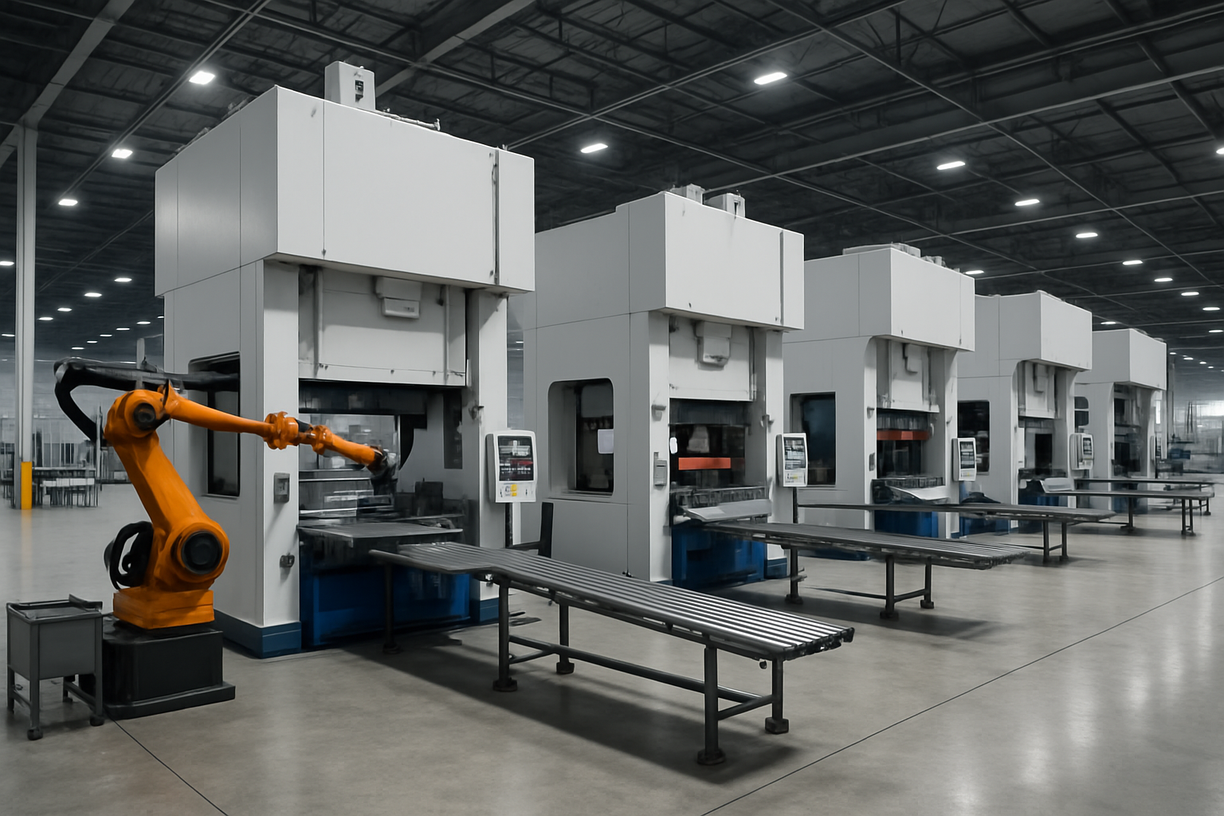
4. Financial Stability & Business Continuity
- Request financial health indicators and business continuity plans.
- Do they have contingency strategies for natural disasters or supply disruptions?
- Are they investing in new technology to stay competitive?
- Is their customer base diversified?
5. Communication & Customer Service
- Do they respond quickly to quotes or engineering questions?
- Is there dedicated project management and clear accountability?
- Do they offer DFM guidance and technical support?
6. Logistics & Location
- Evaluate time zone, shipping logistics, and customs expertise.
- Are they local for fast delivery or overseas for cost savings?
- Do they manage export documents and compliance?
7. Total Cost of Ownership (TCO)
- Include tooling, quality, freight, and hidden costs in your evaluation.
- Consider administrative burdens and risk-related costs.
8. References & Track Record
- Ask for customer references and case studies from similar industries.
- If feasible, schedule a facility visit.
- Check for awards or third-party recognition.
Evaluate PRIME by these standards and discover why global leaders trust us as their stamping supplier.
Ⅹ:esign for Manufacturability (DFM)
Optimize your stamping parts for production and cost with our collaborative engineering approach.
What is DFM? Design for Manufacturability (DFM) is a proactive engineering approach that simplifies designs, reduces costs, and improves quality by addressing manufacturability early in the design cycle.
At PRIME, our DFM service becomes an extension of your engineering team, ensuring your stamping parts are not just manufacturable — but manufacturable with excellence and cost-efficiency.
Buyer's pain:“My design is complex. I'm concerned about high production costs, potential manufacturing issues, and long lead times. How can I ensure my parts are optimized for stamping?”
1. Early Involvement & Collaborative Review
Our engineers review your 2D/3D CAD models and specifications to identify manufacturability challenges and offer actionable improvements. Avoid costly redesigns and tool modifications later.
2. Material Optimization & Cost Reduction
- Size Reduction: Suggestions to reduce material use without compromising function.
- Material Type Recommendations: Based on strength, corrosion resistance, and cost.
- Scrap Reduction: Nesting and layout strategies to minimize waste.
3. Process Simplification & Efficiency
- Feature Simplification: Redesigning difficult features for easier tooling.
- Tooling Longevity: Designs that extend die lifespan and reduce downtime.
- Eliminating Secondary Ops: Using progressive dies to reduce welds, trims, etc.
4. Tolerance Control & Quality Improvement
- Critical Dimension Focus: Precision where it matters most.
- Springback Compensation: Simulation-backed corrections in tooling.
- Defect Prevention: Avoid wrinkles, cracks, burrs before they happen.
Our DFM service is not an extra cost — it's an investment in your project’s success. Leverage decades of manufacturing expertise by collaborating early with our engineers. Your stamping designs will be built for peak performance, maximum cost-efficiency, and seamless production.
Minimize risk. Accelerate time-to-market. Gain a competitive edge.
Ⅺ:Metal Stamping vs. CNC Machining: Choosing the Right Manufacturing Process
When sourcing metal components, B2B buyers often face a key decision: should they choose metal stamping or machining? Both are efficient manufacturing methods with unique advantages in cost, precision, volume, and material usage. At PRIME, we offer both stamping and CNC machining capabilities, enabling us to provide objective guidance and the best solution for your specific needs.
Metal Stamping: Ideal for High-Volume, Cost-Effective Production
Metal stamping is a cold-forming process that uses dies and presses to shape flat metal into desired forms. It's a highly efficient method for mass production.
- Cost-effectiveness at scale: Once tooling is made, part costs drop significantly for large runs.
- Speed & efficiency: Stamping presses can produce parts within seconds, especially with progressive dies.
- Material utilization: Less waste compared to subtractive machining.
- Consistency: Fixed tooling ensures repeatable, reliable quality for large batches.
- 2D geometry: Ideal for flat parts with bends, holes, and complex profiles.
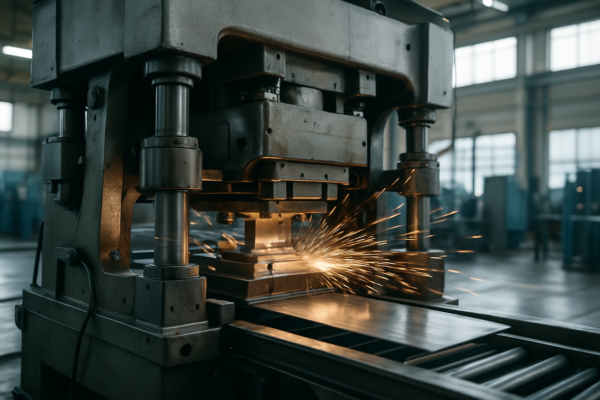
Best Applications:
Automotive brackets and panels, electronic housings, appliance components, medical trays and enclosures, HVAC parts.
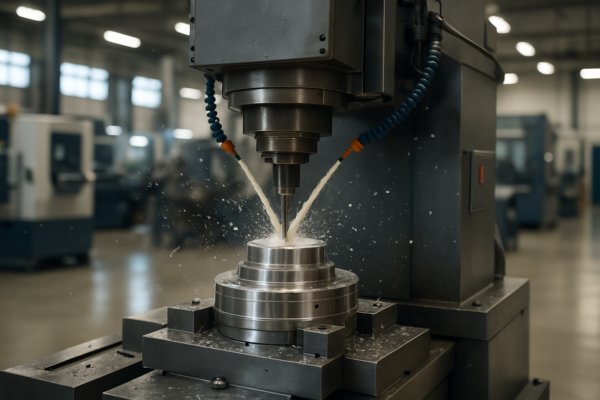
CNC Machining: Perfect for Low Volume, High Precision, 3D Parts
CNC machining is a subtractive process that removes material from solid blocks to form precise parts. It’s highly flexible and accurate.
- Precision: Achieves tight tolerances and complex 3D shapes not possible with stamping.
- Material range: Suitable for hard metals, plastics, and thick stock materials.
- Low-volume efficiency: Ideal for custom parts or prototypes without expensive tooling.
- Design flexibility: Easy to update via software without physical die changes.
- Surface finish: Produces smooth surfaces with minimal post-processing needed.
Best Applications:
Aerospace components, medical implants, precision custom parts, prototypes, and parts with internal passages.
Comparison Table: Stamping vs. CNC Machining
| Feature | Metal Stamping | CNC Machining |
|---|---|---|
| Production Volume | High to ultra-high | Low to medium |
| Part Complexity | 2D profiles and bends | Complex 3D geometries |
| Tooling Cost | High (dies) | Low (programming) |
| Unit Cost | Very low (at scale) | Higher |
| Lead Time | Longer (for dies) | Shorter (for setup) |
| Material Thickness | Thin sheet metal | Wider range |
| Tolerance | ±0.01mm | ±0.005mm |
PRIME’s Integrated Approach
At PRIME, we don’t just offer one solution. With expertise in both precision metal stamping and CNC machining, we evaluate your project objectively and recommend the most cost-effective and technically suitable method.
Share your project details with us, and our engineering team will help you choose the best manufacturing path.
Ⅻ:Global Supply Chain & Logistics: Seamless Worldwide Delivery
For international B2B buyers, efficient and reliable logistics are just as important as product quality. With rich global trade experience and a robust supply chain network, Prime ensures your precision stamping parts are delivered seamlessly, on time, and within budget — wherever you are.
Buyer Concern
“How can I ensure my parts arrive on time without unexpected customs delays or hidden costs when working with international suppliers?”
Prime’s End-to-End Logistics Solution
Prime's commitment goes far beyond manufacturing. We provide intelligent logistics and supply chain support to eliminate sourcing friction and boost your global competitiveness. Here’s how we deliver peace of mind and precise parts — anywhere on the map.
1. Trade Compliance & Export Expertise
- HS Code Classification: Ensures correct tariff application and minimizes customs delays.
- Comprehensive Documentation: Including invoice, packing list, certificate of origin, and destination-specific forms.
- Up-to-date Compliance: We track evolving export laws and sanctions so your delivery stays uninterrupted.

2. Flexible Transport Strategies
Our global logistics partnerships ensure optimal routing:
- Air Freight: Fast, secure delivery for urgent and high-value orders.
- Ocean Freight (FCL/LCL): Best for bulk and cost-efficiency.
- Multimodal Options: Blending speed and budget using air-sea-land combinations.
3. Real-Time Tracking & Proactive Communication
Transparency is key. From factory to your doorstep, you’ll get real-time updates. We alert you to potential delays before they become issues.
4. Secure Packaging & Damage Control
- Custom-Fit Packaging: Designed for secure transit.
- VCI & Anti-Corrosion Materials: Protects precision metal components during storage and shipment.
- Impact Absorption: Prevents transit damage with protective cushioning.
5. Global Warehousing & Inventory Buffering
For recurring buyers and long-term contracts, we offer regional warehousing and JIT inventory options — reduce lead times, smooth out supply fluctuations, and ensure business continuity.
The Prime Logistics Advantage
Let Prime handle logistics, compliance, and delivery while you focus on growth. We bring your components where you need them — on time, every time.
XIII:Prime R&D and Innovation: Driving Future Solutions
In the fast-evolving industrial landscape, staying ahead requires continuous innovation. For B2B buyers, partnering with a supplier that invests in R&D means access to cutting-edge solutions, increased efficiency, and a competitive advantage. At Prime, our commitment to R&D is driven by improving processes, enhancing material performance, and exploring advanced manufacturing technologies to deliver superior value.
Buyer Concern: How does this supplier ensure they are always on the cutting edge of technology? Can they support my future product development and evolving technical needs?

1. Advanced Material Research
We are constantly researching and testing new alloys and composites to expand our stamping capabilities. This includes the exploration of lightweight, high-strength materials for aerospace and automotive applications, as well as specialized materials for extreme environments such as high temperatures and corrosion. Our materials scientists work with leading research institutions to understand the formability and performance characteristics of emerging materials to ensure that we can punch out the materials of the future.
2. Process Optimization and Automation
Our research and development efforts are focused on optimizing the stamping process to improve efficiency, accuracy and cost effectiveness. These include:
Smart Tool Development
Robots integrated with artificial intelligence
Simulation and predictive modeling
3. Sustainable Manufacturing Practices
Prime's innovation also extends to environmental responsibility. We are actively researching and implementing sustainable manufacturing practices to reduce our ecological footprint and help our customers achieve their sustainable development goals. These include:
Energy Efficiency: invest in energy-saving machinery and optimize production layout to minimize energy consumption.
4. Custom Solution Development
Our R & D capabilities enable us to develop highly customized, stamping solutions for unique and challenging applications. If your project requires novel approaches, specialized materials, or innovative processes, our R & D team has the ability to work with you from concept to implementation. We are dedicated to solving complex engineering problems and translating your vision into tangible products.
PRIME’s Innovation Advantage:
Partner with a forward-thinking manufacturer that constantly invests in the future of metal stamping. Stay ahead of the curve and be confident your long-term needs will be met with innovative and sustainable solutions.
Learn MoreXIV:Value-Added Services: Beyond Stamping, Toward Integrated Solutions
For B2B buyers, streamlining the supply chain and reducing the number of vendors can significantly reduce costs, boost efficiency, and simplify logistics. At PRIME, we provide a comprehensive suite of value-added services that turn your metal part sourcing into a true one-stop solution.
Buyer Concern
"I need more than just a stamped part—I need machining, assembly, or specialty treatments. Managing multiple vendors is time-consuming and risky. Can one supplier handle it all?"
PRIME’s Solution
As your single point of contact across diverse manufacturing processes, we ensure smooth transitions and consistent quality control. Our integrated services provide more complete, ready-to-use parts, saving you time and resources.

1. Secondary Machining Operations
- CNC Machining: Achieves ultra-tight tolerances, 3D profiles, threads, and complex holes beyond stamping capabilities.
- Tapping & Reaming: For precise internal threads and high-accuracy holes.
- Grinding: For ultra-flat surfaces and controlled thickness.
2. Assembly & Subassembly
PRIME streamlines your production by assembling parts before they reach your line:
- Mechanical Assembly: Combining stampings with fasteners, springs, and inserts.
- Welding: MIG, TIG, and spot welding for structural integrity.
- Fastener Insertion: Automated or manual embedding of bolts, nuts, and more.
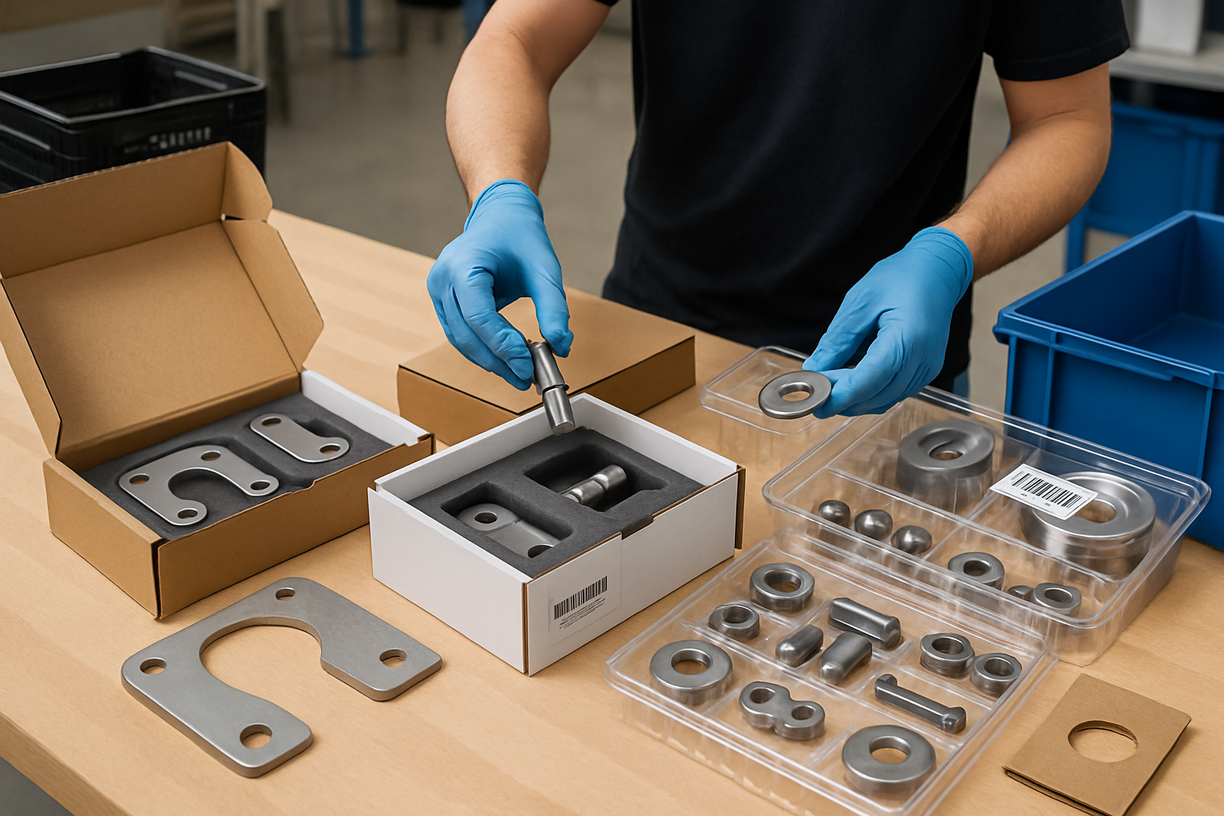
3. Kitting & Custom Packaging
- Kitting: Organizing related components into single ready-to-assemble kits.
- Custom Packaging: Designed to protect, optimize space, and simplify handling.
- Labeling & Barcoding: For easy inventory tracking and identification.
4. Heat Treatment
- Annealing: Softens metal for forming or stress relief.
- Hardening & Tempering: Enhances strength and durability of components.
5. Cleaning & Deburring
- Precision Cleaning: Removes oils and contaminants before downstream use.
- Advanced Deburring: Smooths sharp edges via tumbling, laser deburring, or vibratory finishing.
The PRIME One-Stop Advantage
By consolidating your value-added needs with PRIME, you reduce lead time, minimize inter-supplier quality risk, and lower total cost of ownership.
Our seamless, integrated capabilities go beyond manufacturing, making us a true partner in your product’s success.

Materials
| Stainless Steel | Cold Rolled Steel |
| Low Alloy Steel | Commercial Carbon Steel |
| Aluminum | Copper |
| Brass | Other Metals |
Finishing
| In-Line Annealing | Pickle Passivating |
| Parts Washing | Bead Blasting |
| Sanding | Buffing |
| Burnishing | Electropolish |
| Laser & Electromarking | Painting |
XV:More Information On Custom Metal Stampings
High-quality metal stamping parts, designed to provide you with exclusive customization to meet your industry needs.
Production Method
- Progressive Die
- Transfer Die
- Deep Draw Stamping/Stainless
- Water Jet
- Metal Spinning
- Laser Cutting & Forming
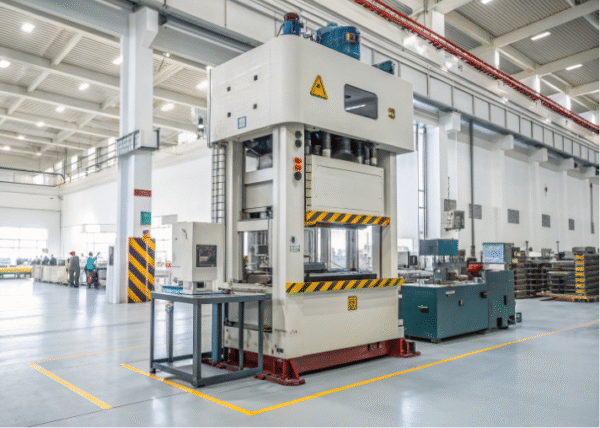
In Summary
Selecting the ideal stamping parts supplier is a strategic decision that goes far beyond price comparisons. In this comprehensive guide, we’ve explored critical aspects of metal stamping—from core processes and material selection to quality assurance and global logistics. Success hinges on partnering with a supplier that supports not just your immediate needs, but your long-term growth.
Key Takeaways for B2B Buyers
- Technical Excellence is Crucial: Modern stamping demands suppliers with advanced capabilities and deep process expertise to deliver consistent, high-quality results across progressive dies, deep drawing, and complex geometries.
- Quality is Non-Negotiable: Defects can be costly. Look for suppliers with strong QMS, comprehensive testing, SPC, and certifications proving their commitment to excellence.
- Total Cost of Ownership: Go beyond unit price. Consider tooling, quality, logistics, and DFM capabilities. Slightly higher unit costs may offer greater overall value.
- Partnership Approach: Seek suppliers that invest in your success, provide proactive engineering support, and go beyond simply filling orders.
- Global Capability with Local Support: Choose a partner that understands customs, logistics optimization, and can adapt to evolving global conditions while offering fast, reliable service.

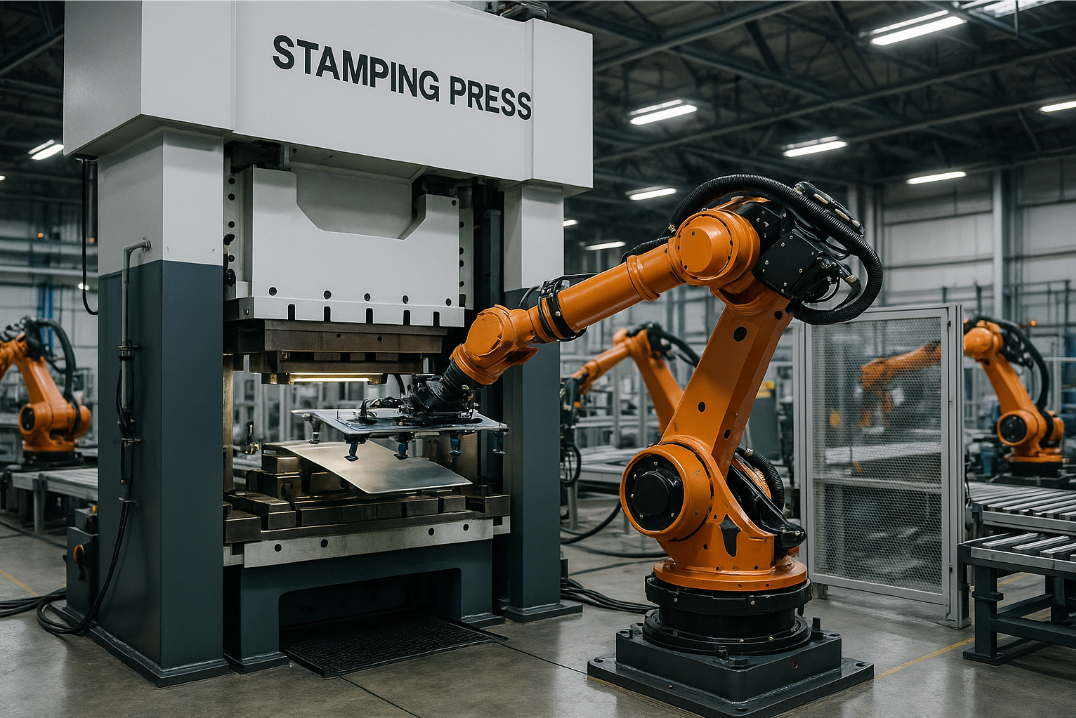
Why PRIME Stands Out
At PRIME, we embody everything discerning B2B buyers seek in a metal stamping partner. Our 30+ years of experience, ISO 9001:2015 certification, and cutting-edge production capabilities form the backbone of outstanding results—but it’s our dedication to your success that truly differentiates us.
We don’t just make parts—we solve problems, optimize designs, and simplify supply chains. From initial DFM consultation and rapid prototyping to full production and global logistics, we offer an integrated, seamless experience.
Global Reach, Local Touch
With 15 high-speed stamping lines and operations across North America, Europe, the Middle East, and Australia, we’re equipped to scale with you—wherever you go. Our logistics team ensures smooth shipping, customs compliance, and cost-effective delivery worldwide.
Experience how the right stamping supplier can be your strategic advantage in achieving manufacturing excellence.

Your Next Step
Whether you're sourcing stamped parts for the first time or seeking to optimize your supply chain, we invite you to experience the PRIME difference. Upload your drawings and specifications through our secure portal, and receive a comprehensive feasibility analysis and competitive quote within 24 hours.
Let’s create something extraordinary together.
Get a Quote NowJust a Few of the Partners Who Trust Our Quality
*Logos are property of their respective owners.
What Our Customers Say
Real feedback from global buyers who trust us to deliver high-quality, customized industrial components.

Harry M., New York
Purchasing Manager – Metal Components
We’ve sourced CNC machined parts from Prime for over two years. The precision is consistently excellent, tolerances are spot on, and their team is responsive and professional. Fast lead times and secure packaging make them a reliable long-term partner.

Robert J., California
Strategic Sourcing Specialist – Industrial Hardware
The forged components we received from Prime were top quality — strong material integrity, accurate dimensions, and zero defects. Their team understood our specs clearly and delivered right on schedule. Great supplier for high-stress applications.

Emily T., Texas
Supply Chain Buyer – Custom Metal Parts
We ordered a batch of custom metal welded assemblies from Prime, and the quality was outstanding. The welds were clean, uniform, and met all our strength requirements. Communication was smooth, and delivery was faster than expected.

Hannah K., Ontario
Senior Buyer – Automotive
Prime supplies us with custom metal casting parts that meet strict automotive standards. Their ISO-certified quality, fast prototyping, and on-time delivery make them a trusted partner in our supply chain.

Luis R., Barcelona
Procurement Lead – Electronics
Prime has been a reliable partner for our custom plastic parts in consumer electronics. The injection-molded components are precise, durable, and always delivered on time, helping us stay competitive in the market.

Nadia P., Dubai
Category Manager – Industrial Projects
Prime delivers high-quality custom metal forgings for our industrial machinery. The parts are strong, reliable, and meet our exact specifications. With consistent quality and on-time delivery, Prime has become a trusted partner in our long-term projects.

Jon S., Munich
Operations Buyer – Machinery
Prime’s custom metal fasteners have proven to be durable and precise, perfectly fitting our heavy-duty machinery. Their consistent quality and reliable delivery help us maintain smooth production with fewer interruptions. Prime is a supplier we can count on for critical components.

Aisha M., Sydney
Sourcing Manager – Energy
From quoting to final inspection, Prime stayed on schedule with transparent updates. Their QC reports, salt spray results, and traceability made onboarding very smooth.
Get Your Custom Solution & Quote
REPLY WITHIN 24 HOURS
Start a Conversation with Our Experts
When you contact us, you get more than just a price. You get a dedicated partner.
- ✔ 30+ Years of Manufacturing Excellence, Direct from Our Factory
- ✔ Custom-Engineered Solutions for Your Needs
- ✔ Global Shipping & Logistics Support
- ✔ A Transparent, No-Obligation Quote
- ✔ 100% Confidentiality Guaranteed
Your email information will be kept strictly confidential and our business staff will ensure that your private information is absolutely safe!

